New Member Benefit LifeWorks Member Assistance Program







Page 12

New Unity Series
A Lens into Diversity, Equity, and Inclusion in the Veterinary Profession







Page 14 PacVet 2022!
June 2–5 in San Francisco



Page 26

Volume 76 Number 01 • January–February 2022 Volume Number Veterinarian California The Publication of the California Veterinary Medical Association

To us, you are our #1 priority. CVMA members receive veterinary-specific workers’ compensation insurance at discounted rates with Preferred Employers Insurance, a Berkley company. E-mail info@visc-ins.com or call (888) 762-3143 to learn more.





3 LifeWorks Member Assistance Program Pursuing Excellence in the Veterinary Profession 14 38 12 A Lens into Diversity, Equity, and Inclusion in the Veterinary Profession Geriatric Care Upcoming CE 4 CVMA Spring Seminar 8 Online Seminars 26 Pacific Veterinary Conference in San Francisco Inside This Issue Contents Features Volume 76 Number 01 | January–February 2022 4 Upcoming CE Events 5 Director’s Corner 6 First-Year Veterinarian 7 News & Now 22 Compliance Corner 38 RVT News 39 Student News 40 UC Davis News 41 WesternU News 43 Classifieds 46 Ad Index Departments 9 Member Profile: Dr. Karryssa Fenderson 10 The CVMA—Your Prescription for Success 12 LifeWorks Member Assistance Program—Wellness Made Simple 14 Diversity, Equity, and Inclusion in Veterinary Medicine: A Professional Priority 16 Establishing Operational Resilience for Your Practice 17 Legal FAQs 18 CAVMRC Purchases New Trailer for Transporting Supplies to Disaster Areas 19 Ask What Your PAC Is Doing for You 21 California Livestock Antibiograms Now Available for Veterinarians 24 Cultivating Your Practice Is a Worthwhile Investment 32 Canine Atopic Dermatitis: How to Use the Newest Drugs in Clinical Practice 34 Something to Wag About 35 CVMA Board of Governors Openings 36 Welcome, New Members!
Upcoming CE Events
Sexual Harassment Prevention Education and Training
March 16, 2022
12:00 PM–1:00 PM | Non-supervisors (1 CEU)
12:00 PM–2:15 PM | Supervisors (2 CEUs)
March 22, 2022
5:00 PM–6:00 PM | Non-supervisors (1 CEU)
5:00 PM–7:15 PM | Supervisors (2 CEUs)
For more information, see page 8.

CVMA Spring Seminar in Yosemite This event is sold out.

March 11–13, 2022
12 CEUs for veterinarians
Sponsored by

California Veterinarian
The Publication of the California Veterinary Medical Association
Publisher Dan Baxter
Managing Editor Kristen Calderon
Editor Taryn DeOilers
Publication Designer Howard Steffens
Classified Advertising
Board of Governors
President
2022 Pacific Veterinary Conference in San Francisco
June 2–5, 2022
28.5 CEUs
For more information, see page 26.
SAVE THE DATE!
CVMA Fall Seminar in Palm Springs

September 30–October 2, 2022
12 CEUs for veterinarians
8 CEUs for technicians and CVMA CVAs
Registration for all CVMA events can be made online by logging onto cvma.net or by calling 800.655.2862.
CVMA-Affiliated Programs
Tell
California Veterinarian (ISSN 00081612) is published bi-monthly by the California Veterinary Medical Association, e-mail: staff@cvma.net. California Veterinarian is an official publication of the California Veterinary Medical Association. Annual subscription rates to non-members: $50 U.S., $60 Canada/Mexico, $70 overseas. Price per single copy: $10 current year, $12 back issues. Periodicals postage paid at Sacramento, CA and at additional mailing offices. POSTMASTER: Send address changes to California Veterinarian, 1400 River Park Dr., Suite 100, Sacramento, CA 95815-4505. Phone: 800.655.2862
The CVMA and California Veterinarian assume no responsibility for material contained in articles and advertisements published, nor does publication necessarily constitute endorsement by them. ©2022 CVMA
Laura Phillips
Dr. Elisabeth Klapstein
President-Elect Dr. Keith Rode
Member-at-Large Dr. Michael Karle
Members
Dr. Peter Bowie
Dr. Patrick Connolly
Dr. Larry Correia
Dr. Jennifer Hawkins
Dr. Adam Lauppe
Dr. Julia Lewis
Dr. Peter Mangold
Dr. Teresa Morishita
Dr. Peter Vogel
Dr. James White
Dr. Jodi Woods
Dr. Dirk Yelinek
Student Representatives
University of California, Davis
Alison Pankowski
Western University Katelyn DeVore
Treasurer Dr. George Bishop
Chair, House of Delegates Dr. Brent Wooden
CVMA Staff
Executive Director Dan Baxter
Assistant Executive Director Della Yee
Director of Communications Kristen Calderon
Director of Finance Kathy Van Booven
Director of Regulatory Affairs Dr. Grant Miller
Design and Marketing Manager Howard Steffens
Membership and Student Services Laura Phillips
Manager
Publications Manager Taryn DeOilers
Accountant Bernice Evans
Communications and CE Coordinator Nicole Campos
Executive Assistant Patricia Lynn
Finance Coordinator Sharmele Browne
Meetings and Events Coordinator Lily Briggs
Membership Coordinator Jennifer Smith Receptionist Mary Young
Display Advertising
Please contact Taryn DeOilers at 916.649.0599 ext. 16 or email tdeoilers@cvma.net.
Volume 76 Number 01 • January–February 2022
us what you think!
to comment on what the CVMA is doing or writing about? Send an email to comments@cvma.net or call 800.655.2862. Your thoughts and opinions matter to us. The CVMA is YOUR association! The CVMA is 7,800 voices strong. Let us hear your voice!
Want
MRC CA CALIFORNIA VETERINARY MEDICAL RESERVE CORPS
IN-PERSON HYBRID
VIRTUAL
IN-PERSON
SOLDOUT! .
California Veterinarian • January–February 2022 cvma.net 4
One of the hallmarks of CVMA membership is access to a vast array of useful member benefits, from free legal advice to discounted continuing education programs, from regulatory compliance resources to member-specific insurance products. In 2021, we unveiled two new member benefits consisting of discounted compounded medications through Epicur Pharma and discounted printing services through The Castle Press. We are excited about our new affiliation with both of these services, and the early returns on each have been very positive.
As we ring in the New Year, we also ring in another new member benefit that we are proud to announce. On January 3, we initiated a partnership with LifeWorks, a nationally recognized Employee Assistance Program (EAP) provider. As more fully described on page 12, this new benefit will provide CVMA members and their dependents—at no charge—with an extensive suite of mental health resources, including in-person and remote counseling and other clinical services, self-guided programs on combatting depression, anxiety, and grief, an extensive health and wellness library, and much more.
Our new program specifically addresses the wellness needs of our membership. In response to the CVMA’s 2019 Economic Survey, both our DVM and RVT members identified mental health and wellness as the number one issue confronting the profession and those working within it (…and that was before the COVID-19 pandemic!). After reviewing the data from that survey, we looked for ways to address the wellness-related concerns articulated by our members. Our first step was last year’s “Renew” series published in this magazine, which is now being furthered by “Unity”, a new series of articles on diversity, equity, and inclusion that begins with Dr. Suzie Kovacs’ contribution to this very issue, entitled “Diversity, Equity, and Inclusion in Veterinary Medicine: A Professional Priority.” As discussed by Dr. Kovacs and also detailed in our prior edition of California Veterinarian, these concepts are closely linked to both individual and community wellness.
Around this time last year, we also began exploring whether and to what extent we might address wellness on the member benefits front. After no small amount of discussion, our energies began to focus on the prospect of introducing an EAP, or in our case and more accurately, an “MAP”—Member Assistance Program. We reviewed and considered different options, and eventually identified LifeWorks as the most desirable provider with whom to partner. Working closely with LifeWorks’ representatives, we constructed a program that we believe will be of significant value to CVMA members and their families, and we are excited to launch it as we begin the New Year!
One of the reasons we chose LifeWorks, in fact, was its commitment to supporting the wellbeing needs of diverse communities. LifeWorks supports and promotes diversity and inclusion in the workplace by, among other things, matching people with counselors who share similar lived or cultural experiences, hiring and promoting people that are representative of diverse communities, and maintaining resources and programs that themselves promote the virtues of diversity and difference. We hope and expect that our new program with LifeWorks will thus have equal value for all who wish to utilize it, and we encourage you to do so.
































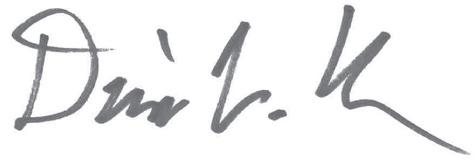
In the meantime, we are not done. Mental health issues in the veterinary profession are not going away, and we are thus contemplating still more wellness-related resources for our membership. And, since helpful member benefits are always a high priority for the CVMA, we are continually looking to amplify the value of your CVMA membership through new and different offerings.
Welcome to 2022!


 Dan Baxter, Executive Director
Dan Baxter, Executive Director
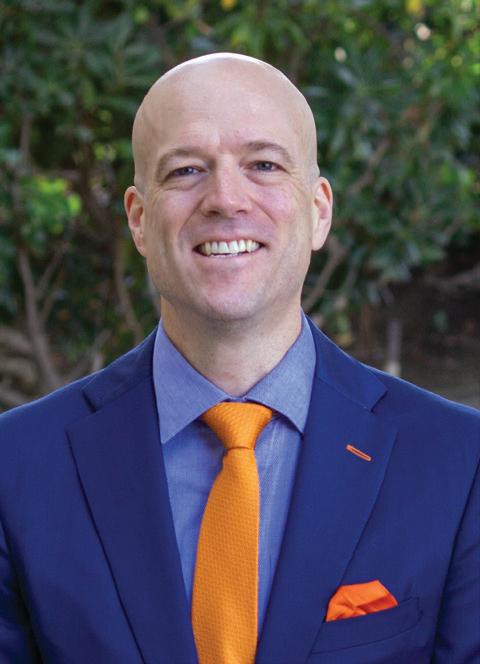
View this issue of the California Veterinarian online at cvma.net/publications.
A Tough Pill to Swallow
Robin Roque, DVM By
AI’m becoming much more confident in my medicine and clinical abilities. I’ve taken on more urgent care cases amidst my scheduled appointments, and I’m feeling good about my time management.
Recently, I performed an impromptu mast cell tumor removal—a 4cm x 2cm alopecic mass caudal to the thoracic limb. The margins made skin apposition difficult, especially in such a high-motion area, but I was able to make a y-shape closure to decrease the tension. Histopathology results confirmed I took appropriate margins, the patient is healing well, and dehiscence has yet to occur.
I’ve had two fentanyl toxicity cases within two weeks. Both dogs presented lateral and non-responsive. Each time, a good history coupled with the dog’s clinical signs gave me confidence that naloxone was warranted. Seconds after giving the reversal, these furry friends were bright, alert, and responsive, ready to play and give kisses. I was quite surprised at how quickly they changed in demeanor.
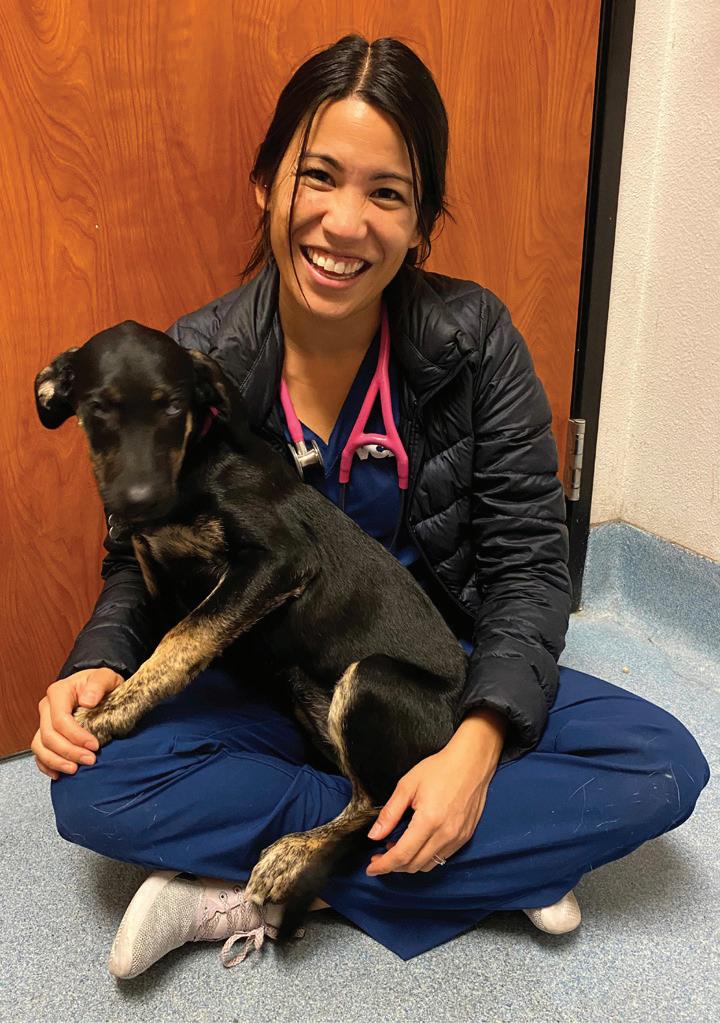
Other cases I’ve dealt with have involved more timecommitting diagnostics. An owner and I went down the long road of diagnosing and treating hyperadrenocorticism. A cat came in for lethargy and inappetence, and an extensive work-up confirmed lymphoma; the cat is now on prednisolone. An alopecic, patchy dog was presented for unmanaged skin issues; a culture and sensitivity test gave us our culprit: Methicillin-resistant Staphylococcus pseudintermedius. The poor pup was treated with daily medicated baths and clindamycin. Since then, its skin has vastly improved.
These cases are little triumphs that have bolstered my confidence as a new practitioner. However, I recently experienced my first hard-hitting loss. Another animal—this time an older female dog—was brought in for lethargy and inappetence. Radiographs, an AFAST, and bloodwork all pointed toward pyometra. Later, the radiologist called to confirm my suspicion, but warned me of a slight possibility that this dog also had a small intestinal foreign body. I urged referral to a specialist for this surgery; while the spay was not an issue, I told the owners that I’d never completed a foreign body surgery on my own. Nonetheless, they were insistent, and directed me to proceed with the surgery.
So off I went. My mentor oversaw the entire process and confirmed I handled the case correctly. We stabilized the patient with fluids, then admitted her for surgery. After finishing the spay, I went through the intestines and found she was negative for a foreign body. The patient recovered well post-op, but towards the end of the day, she began to crash. I stabilized her and informed her owners that their little baby would need to be referred to a 24-hour facility for overnight care. The first question they asked was, “What did you do wrong?” My brain reeled. I thought of every treatment I administered, every step I took during surgery, and quickly came to and replied, “I did nothing wrong.”
The next morning, the patient came back in worse condition; she had underlying disease that wasn’t clearly explained during history. Given her quality of life and their inability to proceed with further hospitalization, they decided to euthanize. I completely lost it. I broke down crying. My very supportive mentor took over the case, allowing me to take time to collect myself. He assured me that this was not my fault, and while medicine can often times lead to satisfying victories, it is complemented by tragic defeat, despite what we do to intervene.
This has been a tough pill for me to swallow. My heart aches for the dog and her devastated owners. I’ve always understood that I’d encounter an outcome like this one, but handling it firsthand is much harder than I anticipated. Now more than ever, I recognize the importance of leaning into my loved ones and hobbies for balance and strength. To those experiencing something similar, please know you are not alone, and it is not your fault. We simply cannot save them all.
First-Year Veterinarian California Veterinarian • January–February 2022 cvma.net 6
Cal/OSHA Form 300A Posting Requirement

Cal/OSHA Form 300A is a summary of specific job-related illnesses and injuries that have been reported by businesses in 2021. Businesses must post this form for employee review between February 1, 2022 and April 30, 2022. Visit https://www.dir.ca.gov/dosh/doshreg/apndxb300afinal.pdf to access this form.
CVMA 2022 Action Plan Posted
The CVMA Board of Governors held its strategic planning meeting in October of 2021. During that meeting, the Board discussed the CVMA's goals for 2022 and proposed action items to set these goals into motion. To view the CVMA’s 2022 Action Plan, please visit the CVMA’s website at cvma.net > About CVMA > CVMA Action Plan 2022.
Advertise in California Veterinarian
With the largest circulation of any state veterinary publication, California Veterinarian is distributed to all licensed veterinary professionals in California as well as interested parties throughout the United States and the world. We would love to discuss advertising opportunities for your veterinary-related product or service. For more information, please contact Taryn DeOilers at tdeoilers@cvma.net. To access our newly designed media kit, visit cvma.net > Publications > California Veterinarian Magazine > California Veterinarian Display Advertising.
Upcoming Meetings
Veterinary Medical Board Multidisciplinary Advisory Committee Meeting
Leadership Development Committee Meeting
Veterinary Medical Board Meeting
RVT Committee Meeting
Board of Governors Meeting
VISC Board Meeting
CVMA Leadership Forum
Legislative Committee Meeting
Board of Governors Executive Session and House of Delegates Meeting
Ways & Means Committee Meeting
News Now@CVMA & 7 View this issue of the California Veterinarian online at cvma.net/publications.
JAN 21 JAN 19 JAN 18 JAN 22 JAN 23 FEB 27 FEB 24 MAR 2 MAR 4 MAR 8 = Hybrid or Virtual Event
CVMA Online Seminars

CE You Need When You Want It, Where You Want It!

CVMA Online Seminars are a quick, easy way to fit CE into your busy schedule wherever you have a high-speed internet connection. The CVMA offers most interactive webinars on two different dates and times, allowing you to pick the presentation that works best for you so that you don’t miss out on valuable CE.

Sexual Harassment Prevention Education and Training

Stephen Marmaduke | Jizell Lopez, Wilke Fleury LLP
March 16, 2022 | 12:00 PM–1:00 PM Non-supervisors (1 CEU) | 12:00 PM–2:15 PM Supervisors (2 CEUs)
March 22, 2022 | 5:00 PM–6:00 PM Non-supervisors (1 CEU) | 5:00 PM–7:15 PM Supervisors (2 CEUs)
Employers with five or more employees must provide sexual harassment and abusive conduct prevention training for all employees every two years. New supervisory employees must still be trained within six months of assuming their supervisory position, and new non-supervisory employees must be trained within six months of hire. Additionally, temporary, seasonal, and other employees hired to work less than six months require this training within 30 calendar days after the hire date or within 100 hours worked, whichever comes first.
This webinar will meet the requirement for one hour of training for non-supervisor employees and two hours of training for supervisors.
8 California Veterinarian • January–February 2022 cvma.net
Register online by visiting the Learning tab at cvma.net or by phone at 800.655.2862. Approved for in-house administration and dispensation in California Traditionally compounded medication from a 503B MANUFACTURER Follow cGMP, the same regulations used by pharmaceutical companies To order, call 888.508.5032 or go to ifill.com ® CVMA Recommended Member Benefit! CVMA members receive a 10% discount on all Epicur Pharma purchases from the 503B product line. View our product portfolio
I AM THE ®
Karryssa Fenderson, DVM
Associate Veterinarian at Covina Animal Hospital
Practice type: Small animal general practice
UC Davis School of Veterinary Medicine
When I was little, I wanted to be a veterinarian, though when I was very young I used to call it a “vegetinarian.”

What five adjectives best describe you? Hard-working, dedicated, giving, worrier, perfectionist.
If I won the lottery, I would pay off my student loan debt, buy a house, and travel.
Where would you go if you could go anywhere? I have always wanted to travel the world to places in need of veterinary care—to learn and appreciate culture firsthand, but also to utilize my veterinary knowledge.
My hero is my late grandmother. She supported me to accomplish what she always wanted to but couldn’t because she was a woman.
A hobby or interest I have is dance—I got my undergraduate degree in Animal Science but also in Dance. I’ve been trained in multiple styles, but especially love modern and hip-hop.
I am a CVMA member because I have access to excellent CE opportunities and networking, and I can stay up-to-date on legislation affecting the profession.
Members are the heart of the CVMA
9 View this issue of the California Veterinarian online at cvma.net/publications.
The —Your Prescription for Success
























Side effects may include money and time savings, connection with colleagues, feeling of security in knowing that you are represented at the Capitol, and satisfaction of knowing that you are doing your part to protect your profession.


10 California Veterinarian • January–February 2022 cvma.net
Continuing Education
Special Member pricing on CE offered in-person and online to fit your needs. Visit the Learning tab at cvma.net.
Manage your continuing education records through the CVMA website. Visit the Learning tab at cvma.net.
The CVMA Certified Veterinary Assistant Program increases your veterinary assistants’ education, experience, and skills. Visit the Careers tab at cvma.net.
Business
Free legal consultation for member veterinarians. Take advantage of 30 minutes of free legal consultation each month. Visit the Membership tab at cvma.net
One-stop regulatory consulting resources to help you stay in compliance with ever-changing laws and regulations. Visit the Membership tab at cvma.net
The CVMA InLine Program assists with workplace safety, legal issues, and laws and regulations affecting the profession. Visit cvma-inline.net.
The Relief Veterinarian Directory provides contact information for locum tenens veterinarians. Visit the Resources tab on cvma.net.
The Find-a-Veterinarian online listing allows potential clients to find you by name, city, and practice type. Visit the Resources tab on cvma.net.
Advocacy
Ensuring that your voice is heard at the state Capitol through professional advocacy. Visit the CVMA Legislative Action Center at cvma.net under the Government tab.
Protecting your license by continually monitoring and reporting unlicensed veterinary activity in all areas of practice.
Information
Immediate access to critical information through the California Veterinarian magazine, the CVMA Weekly e-newsletter, the CVMA website, press releases, and action alerts.
The CVMA App allows access to instant legislative updates, CE offerings, regulatory information, and more—all in the palm of your hand.
Wellness
NEW! LifeWorks is a full-service member assistance program (MAP) providing confidential consultations, information and resources, connections to community agencies and supports, and referrals to counseling (by video or in-person). CVMA members and their families have access to the program 24/7 via phone, online, and the free mobile app—all at no additional cost. Additional wellness resources can be found under the Resources tab at cvma.net.
Insurance Coverage
Veterinary Insurance Services Company (VISC) provides personal and professional lines of coverage tailored for the needs of veterinary professionals. Learn more at visc-ins.com.
Delta Dental insurance plans to cover your personal and staff needs.
Vision Service Plan (VSP) provides affordable, high-quality eye care plans.
Career

The CVMA Career Center allows you to post and view classified employment ads and practice sales ads. Visit the Resources tab at cvma.net.
Network with colleagues and specialist s through our membersonly online CVMA Directory. Visit the Resources tab at cvma.net.

Student
The Summer Work Experience Program (SWEP) connects students from UC Davis and WesternU with veterinary practices for summer employment.
VISC offers UC Davis and WesternU student members complimentary professional liability insurance.
Savings on Products and Services
Care Credit helps families manage veterinary costs through monthly payments.
NEW! The Castle Press offers discounts on printing services and products, including controlled substance security prescription pads, name tags, stationery, and more.
CheckmarcUSA provides free check recovery services.
NEW! Epicur Pharma offers discounts on its 503B product line for in-house use and administration as well as secondary dispensation to clients.



GlobalVetLINK offers discount pricing for electronic prescriptions, health certificates, feed directives, and other products to help practices manage records.
HireRight provides discounted employee background screening.
Infintech lowers your credit card processing rates.


Staples Advantage gives deep discounts to members on office items.
Entertainment
California Academy of Sciences provides a discount to the planetarium, aquarium, and natural history museum.
Car rental savings through Alamo, Avis, and National.
TicketsAtWork provides discounts for theme parks, including Disneyland, Disney World, Universal Studios, Great America, Sea World, Six Flags, and more.
Member Benefits
11 View this issue of the California Veterinarian online at cvma.net/publications.
LifeWorks Member Assistance Program—Wellness Made Simple
It is no secret that mental health and wellness is one of the top issues facing veterinary professionals— and the introduction of the COVID-19 pandemic over the past two years has served to intensify the crisis. Most veterinary professionals are overworked, as many practices are understaffed, making for long work hours and a poor work-life balance. Other factors compounding the problem include compassion fatigue, high student debt, and misplaced anger by clients unprepared for the high cost of veterinary care.
To address the issue of mental health in the profession, the CVMA has embarked on developing a comprehensive wellness program. This started with a dedicated wellness resource page on the CVMA website, which includes resources for addiction, mental health, and emotional issues faced by veterinary professionals.
We extended the program by presenting a series of articles entitled “Renew” in recent issues of California Veterinarian, which explored wellness topics for veterinary professionals from physical, mental, and emotional standpoints. If you have not had a chance to read these articles or visit the Wellness resource page, we encourage you to do so at cvma.net/resources/ wellness-program.
The CVMA is a community of veterinary professionals. We know that our community is only as healthy as our members. To promote wellness in our community, we are proud to introduce our most significant offering to date aimed at supporting our members’ mental, financial, physical, and emotional wellbeing with our new member benefit—LifeWorks!
LifeWorks is a confidential full-service member assistance program (MAP) and work-life/wellbeing resource that provides confidential consultations, information and resources, connections to community agencies and supports, and referrals to counseling (by video or in-person). CVMA members have access to the program 24/7 via phone, online, and by free mobile app—all at no additional cost. Additionally, this member benefit is available to spouses, partners, and immediate family members/dependents.
Whether you have questions about handling stress at work and home, parenting and childcare, managing money, or health issues, you can turn to LifeWorks for a

confidential service that you can trust.
• Get expert guidance from professional advisors, any time, about any issue, either work-related or in your personal life
• Speak to a counselor or connect with other specialists, including financial and legal professionals
• Access a wealth of online resources and information to support your mental, physical, social, and financial wellbeing
• Connect to news and updates through the platform’s News Feed on the LifeWorks app
LifeWorks’ MAP counselors are highly qualified and carefully screened based on credentials and level of experience. Minimally, counselors are required to have a Master’s degree in Psychology, Social Work, Educational Counseling, or other related human services field. Some counselors have Ph.D.s.
CVMA members were sent an email on January 3, 2022 from LifeWorks with instructions for signing up. We encourage you to take advantage of this valuable resource. If you did not receive the email, please contact Jennifer Smith at jsmith@cvma.net.
12 California Veterinarian • January–February 2022 cvma.net New Member Benefit
Welcome to LifeWorks

Life can be complicated Get help with all of lifeʼ s questions, issues, and concerns with LifeWorks
Any time, 24/7, 365 days a year.
,
about handling stress at work and home, parenting and child care, managing money, or health issues, you can
Life
Retirement
Midlife
Student life
Legal
Relationships
Disabilities
Crisis
Personal issues
Work Money Health Family
Parenting
Couples
Separation/divorce
Older relatives
Adoption
Death/loss
Child care
Education
Mental health
Addictions
Fitness
Managing stress
Nutrition
Sleep
Smoking cessation
Alternative health
Member Assistance Program and innovative wellbeing resource Check

Time management
Career development
Work relationships
Work stress
Managing people
Coping with change
Communication
Saving
Investing
Budgeting
Managing debt
Home buying
Renting
Estate planning
Bankruptcy
13 View this issue of the California Veterinarian online at cvma.net/publications.
your inbox for an invitation email from LifeWorks containing your unique link. Just follow the steps in the email!
Cultivating diversity, equity, and inclusion is essential to ensuring the health and welfare of the veterinary profession and those working within it. This is the first article in our Unity series, in which we aim to provide a current snapshot of the professional landscape, illustrate why a diverse and inclusive environment is critical for professional and personal wellness, and discuss how we can all work together to bring about needed and positive change.

Diversity, Equity, and Inclusion in Veterinary Medicine: A Professional Priority

















 by Suzie Kovacs, Ph.D. By
by Suzie Kovacs, Ph.D. By
In early 2020, the high-profile deaths of Breonna Taylor, Ahmaud Arbery, and George Floyd ignited grassroots demonstrations against racial and social injustice. Amid one of the worst pandemics in a century, we saw massive protests taking place not just in the United States but across the globe. We saw the mainstream media narrative explode with stories focused on racial disparities and inequities. We saw diversity, equity, and inclusion (DEI) initiatives increase exponentially throughout corporate America, the entertainment industry, academia, and various other institutions. Veterinary medicine was no exception. What has been a chronic issue for the veterinary profession in this country for decades was suddenly infused with a new sense of urgency. By fall of the same year, the number of affinity groups and DEI-focused organizations established in veterinary education and the profession at large more than doubled. Additionally, a joint Commission for a Diverse, Equitable, and Inclusive Veterinary Profession was launched by the American Veterinary Medical Association (AVMA) and the American Association for Veterinary Medical Colleges (AAVMC). There has been a surge within veterinary colleges, industries, and professional organizations as leaders are re-prioritizing their DEI initiatives or implementing them for the first time.
While the urgency is palpable, this problem is hardly novel. The veterinary profession has been struggling for years to become more diverse and representative of the society it purports to serve. Could the professional self-reflection described above be the leverage needed to make real change? Some would say the future of the profession depends on it—and they would not be wrong.
The current face of the veterinary profession
The veterinary profession in the United States is often referred to as one of the least diverse professions, particularly with regard to race and ethnicity. Only a decade ago, it was estimated that over 90% of veterinary professionals working in the U.S. were white. A 2013 article in The Atlantic entitled “The 33 Whitest Jobs in America” saw veterinary medicine take first place on the list.
The current demographics of the veterinary student population nationwide look a little more promising, but still fall short of being representative of an increasingly diverse country. The 2020 U.S. Census data shows a significant increase in all non-white racial categories across the nation, resulting in an increase in the Diversity Index, the “chance that two people meeting at random will be of
14 California Veterinarian • January–February 2022 cvma.net
Unity A
in
Lens into Diversity, Equity, and Inclusion
the Veterinary Profession
different races.” The same cannot be said of the veterinary profession. Indeed, while the veterinary student body is slowly becoming more diverse, it remains disproportionally underrepresented in all racial categories other than white, in which it is overrepresented by 30%, according to the AAVMC’s 2020–2021 annual report.
If we look beyond racial categories, the number of students identified as underrepresented in veterinary medicine (URVM) remains less than a quarter of all students, having risen from approximately 5% of the student population since 1980. The AAVMC defines a student as URVM based on gender, race, ethnicity, and geographic, socioeconomic, and educational disadvantage. Of note, both California’s veterinary colleges (WesternU and UC Davis) currently have two of the highest numbers of URVM students enrolled in their DVM programs, coming in second and third place respectively only after Tuskegee University, which is a historically black college and university.
Clearly, there is more work to be done to create a profession that is truly reflective of the general population. And to be certain, the work is not defined solely by increasing the enrollment of URVM students. We must also be sure that our academic institutions and our workplaces are environments in which everyone can succeed and thrive.
Diversity alone does not guarantee inclusion
“Diversity is sometimes about counting people. Inclusion is always about making people count.” –
Steve L. Robbins, Ph.D., DEI Consultant
Much of the work and focus on diversity in the veterinary profession originated within academic circles, with the AAVMC being one of the most effective drivers for change. Traditionally, most of these diversity-related efforts were focused on recruitment and admissions. This makes sense; to diversify the profession, we need to enrich the pipeline by employing outreach efforts that target underrepresented student populations. A common strategy voiced by members of the veterinary community when asked how to increase diversity within the profession is to educate K-12 students about career opportunities in veterinary medicine. This strategy can be effective,
but only if coupled with efforts to create a profession that is inclusive to those of all backgrounds, particularly the historically underrepresented, including those in the LGBTQ+ community and those with disabilities. More recently, DEI efforts have shifted to include addressing campus and workplace climate. It is not enough to recruit and enroll URVM students; they should feel welcome and included not just on campus but in all veterinary spaces, from the clinics where they gain precious volunteer hours as pre-vets, to the work environments they rotate through during their DVM program. This can be particularly challenging given the relatively monolithic environments that they are entering.
The CVMA recently published a series of articles entitled “Renew,” which focused on mental health and wellness, an issue that has been identified as one of the most critical facing the veterinary profession today. Given that underrepresented populations are disproportionately affected by negative mental health conditions, a commitment to overall veterinary wellness necessitates a concurrent commitment to creating a diverse, inclusive, and equitable veterinary profession.
The road ahead
The CEO of the AAVMC, Dr. Andrew Mccabe, referred to diversity as “the single most important issue” facing the profession and any failure to become more diverse as “an existential threat to our very future.” Indeed, the future of the veterinary profession depends on its ability to serve an increasingly diverse society and it can only do so by creating space for everyone to succeed and thrive. The chronic ailment that has plagued the veterinary profession has become spotlighted due to renewed societal conversations about social justice. This presents an opportunity for a renewed commitment to making diversity, equity, and inclusion a priority in the veterinary profession.
More often than not, the pathway to a veterinary career begins with a childhood dream. I look forward to working with the CVMA, its members, and all veterinary professionals to make that dream a possibility for every child who follows it.
Suzie Kovacs, Ph.D.
Suzie Kovacs graduated from the University of Guelph’s Ontario Veterinary College with a Master of Science in Epidemiology, after which she moved to California and took a faculty position at Western University’s College of Veterinary Medicine. Suzie received a Ph.D. in Higher Education from Claremont Graduate University for work focused on diversity, equity, and inclusion within the veterinary profession. In 2015, she was a charter recipient of the Broad Spectrum Veterinary Student Association LGBTQ+ Awareness Award, a national award that recognizes those who support and confirm inclusivity in veterinary academia, regardless of sexual orientation, gender identity, or gender expression.

15 View this issue of the California Veterinarian online at cvma.net/publications.
Establishing Operational Resilience for Your Practice
by Jack Holt, Risk Control Director, CNA By

Recent news stories of veterinary clinics and hospitals impacted by wildfires, floods, and the coronavirus pandemic underscore the importance of a holistic operational resilience program for your practice. Veterinary practice resilience is the ability to prepare for and adapt to changing conditions caused by natural or man-made events affecting your operations. Three disciplines integrated with proper insurance coverages are vital to recover from adverse conditions: incident management, crisis management, and continuity management.
Incident Management
Incidents or emergencies usually happen without warning and can cause disruption or loss to your business. A simple response structure, a documented plan, and exercises for responding will enable an immediate response and chance to regain control. Incident response actions could include:
• Ensuring local emergency procedures are activated and local responders have been called
• Responding to safety issues (human and animal) as needed
• Notifying the insurance provider of impacts
• Notifying key stakeholders of site impacts (e.g., practice owners, employees, clients, etc.)
Every second matters and failing to establish and practice this response capability can significantly affect the duration, severity, and impact of a disruption.
Crisis Management
Crisis management involves providing a unified voice on the status of practice operations and the impact to patients and clients. Depending on the size and nature of your practice, crisis and incident management plan procedures may be combined or include shared team members, checklists, and response strategies. During the crisis, the team will:
• Convene the appropriate area leaders
• Assess new or emerging impacts based on available facts and potential threats
• Decide on actions, responsibilities, and a timeline for how the organization will respond to current and evolving threats
• Implement the agreed response decisions
• Communicate how the crisis circumstances are being managed
The crisis team will need to provide frequent updates, direction, and support to employees, clients, and others affected by the crisis until operations are fully recovered.
Continuity Management
Resiliency includes maintaining critical services through a period of restoration and returning to “business as usual” as quickly as possible. Plans should be developed in advance of a disruption to ensure your practice has the relationships and resources needed to meet patient and client needs. This includes developing strategies for vital practice elements, such as skilled workers, clinical equipment, facilities, medicines, technology, and key suppliers.
Some examples of strategies for practice elements may include:
• Impact to people—utilize contract or partnering veterinary medical practice staff
• Impact to facilities—move employees to a temporary facility or partnering practice
• Impact to assets/supplies—utilize offsite backup
Insurance coverage decisions can positively affect continuity strategies as well. Below are a few potential coverages:
• Property coverage for damages to facilities and equipment so restoration can begin quickly.
• Business income coverage helps recover the net income loss and continuing expenses (e.g., payroll, rent, utilities) during restoration.
• Ordinary payroll expense coverage helps the company keep the employees needed to run the practice when operations are able to resume.
The insurance policy will provide the actual terms, coverages, amounts, conditions, and exclusions that apply.
A strong resilience framework with incident, crisis, and continuity management disciplines will help ensure your practice is prepared to make thoughtful, fact-based decisions in response to disruptive incidents. By focusing on preparedness, considering challenges, learning from every disruption, and working with insurance brokers and carriers to develop strategic insurance solutions, practice leaders can help ensure that their veterinary medical practices are both financially and operationally resilient. To learn more, please visit cna.com/prepwise and select the “Business Resilience” page.
CVMA Insurance Services California Veterinarian • January–February 2022 cvma.net 16
The purpose of this article is to provide information, rather than advice or opinion. It is accurate to the best of the author’s knowledge as of the date of the article. This article should not be viewed as a substitute for the guidance and recommendations of a retained professional. The statements in this article do not constitute a risk management directive from CNA. All CNA products and services may not be available in all states and may be subject to change without notice. “CNA” is a registered trademark of CNA Financial Corporation. Certain CNA Financial Corporation subsidiaries use the “CNA” trademark in connection with insurance underwriting and claims activities. Copyright © 2021 CNA. All rights reserved.
Legal FAQs
by Stephen Marmaduke By
The CVMA’s Legal Services Program assists members with workplace safety, legal issues, and laws and regulations that affect veterinary professionals. Here are questions and responses that are representative of those asked and answered through the CVMA’s program:
I work at a small veterinary practice. Can I take a leave of absence to care for my critically ill parent without jeopardizing my position?
Effective January 1, 2021, the CFRA was expanded to cover employees of private employers with five or more employees. Under the CFRA, employees who have worked for their employer for more than 12 months and at least 1,250 hours in the immediately preceding 12 months can take up to 12 weeks to care not only for their own serious health condition, but for the serious health conditions of certain “family members,” including a parent. The list of “family members” encompassed by the CFRA now includes a spouse, domestic partner, parent, child (including an adult child), child of a domestic partner, grandparent, grandchild, or sibling. The CFRA leave may also be used to bond with a new child, whether that child arrives by birth, adoption, or foster placement. Although CFRA leave is unpaid, an employee on such leave may be eligible for California’s Paid Family Leave or State Disability Insurance, both of which are administered by the State’s Employment Development Department. Employers are required to continue health benefits to an employee on leave. Further, employees returning to work from CFRA leave are entitled to their same or a comparable position.
Given the above, while there are some qualification requirements and exceptions, you may be able to take CFRA leave to care for a parent with a serious health condition.
I purchased an Employer’s Practices Liability (“EPL”) policy of insurance. Am I protected from all employment claims?
EPL policies are not tantamount to a “get out of jail free” card from employment claims. The type and scope of coverage provided by EPL insurance policies vary by the insurer and should be investigated at the time of purchase. Most policies provide coverage for employee vs. employer claims like wrongful termination or employment discrimination based on a protected class, such as age, race, ethnicity, religion, sex (including sexual preference and identity), national origin, and disability. EPL policies may also cover employer liability to employees due to the conduct of third parties, such as sexual harassment by vendors, clients, or others to whom employees are exposed via their employment. Wage and hour claims may or may not be covered, or may be subject to different limits and deductibles. It is important to understand the scope of coverage provided by an EPL policy before purchasing it.
In California, employer liability claims are becoming a cost of doing business. No employment setting is perfect. Although EPL insurance policies may be expensive and have high deductibles, they can provide valuable protection, particularly from catastrophic claims. Even the cost of defending claims of questionable merit can be devastating to a small business. EPL policies should be investigated and considered as part of the insurance review process of any business.
CVMA veterinarian members may access an attorney for up to 30 minutes of free legal consultation each month through the CVMA Legal Services Program. Attorneys with expertise in business law, employment law, and administrative law (Veterinary Medical Board license defense) are available to answer general questions. For more information about this member benefit, visit the Membership Benefits and Services section under the Membership tab at cvma.net.
Stephen Marmaduke
Mr. Marmaduke has been a partner with Wilke Fleury for 30 years and has been practicing law in California for over 40 years. One of his primary focuses is the representation of physicians and medical groups in matters ranging from corporate structure, mergers and acquisitions, joint ventures, business transactions, regulatory issues, and professional employment.
Mr. Marmaduke is part of the CVMA’s Legal Services Program, a program designed to assist CVMA member veterinarians with workplace safety, legal issues, and laws and regulations that affect the veterinary profession.
Mr. Marmaduke has been a partner with Wilke Fleury for 30 years and has been practicing law in California for over 40 years. One of his primary focuses is the representation of physicians and medical groups in matters ranging from corporate structure, mergers and acquisitions, joint ventures, business transactions, regulatory issues, and professional employment.
Mr. Marmaduke is part of the CVMA’s Legal Services Program, a program designed to assist CVMA member veterinarians with workplace safety, legal issues, and laws and regulations that affect the veterinary profession.

17 View this issue of the California Veterinarian online at cvma.net/publications. Legal Services
CAVMRC Purchases New Trailer for Transporting Supplies to Disaster Areas
In recent years, wildfires have ravaged California with increasing frequency. As a result of several of those fires, the California Veterinary Medical Reserve Corps (CAVMRC) has been called upon to deploy its volunteers to provide emergency veterinary medical services to animals injured or displaced by the blazes. Due to the increasing severity of the fires, those deployments have grown progressively longer and more demanding. The CAVMRC’s most recent deployment—to the Caldor Fire, which decimated portions of El Dorado and Amador counties last summer—lasted 21 days.
Through their Ground Zero experiences over the last few years, CAVMRC field coordinators identified a pressing need for a method of efficiently transporting and storing the CAVMRC’s sizeable cache of deployment supplies. Accordingly, the CAVMRC turned to a longtime supporter, the T.S. & K.D. Glide Foundation, seeking funding for a cargo trailer that could assist with transportation and storage. The Glide Foundation immediately responded with generous support, providing funding to purchase and outfit a 12-foot tandem axle cargo trailer for the CAVMRC’s use.
The cargo trailer is loaded with CAVMRC deployment supplies, medical supplies, and other equipment needed
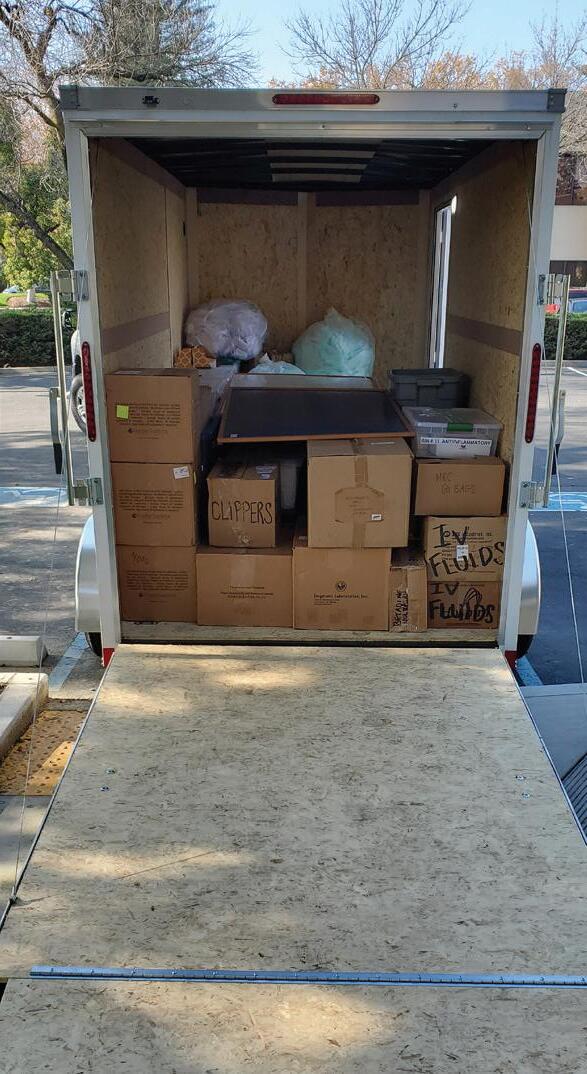
to support volunteers who deploy to provide free veterinary services to animals in emergency shelters during declared disaster responses.
The trailer is currently being stored at an indoor secure storage facility near the CVMA building in Sacramento, loaded and ready to go for whenever the CAVMRC’s services are next requested. The CAVMRC would like to sincerely thank the Glide Foundation for funding this new trailer, which will make a huge difference in all deployments to come. The CAVMRC is now turning its attention to the purchase of a mobile command center that will further support its disaster relief efforts. More information to come!
Support the CAVMRC Today!
The CAVMRC is made up entirely of volunteers who provide free medical assistance to animals during declared states of emergency. Their work is funded by donations made to the California Veterinary Medical Foundation (CVMF), a non-profit created by the CVMA.
To support the CAVMRC in its disaster relief efforts, please consider donating to the CVMF at cvmf.net or by calling Bernice Evans at 800.655.2862.
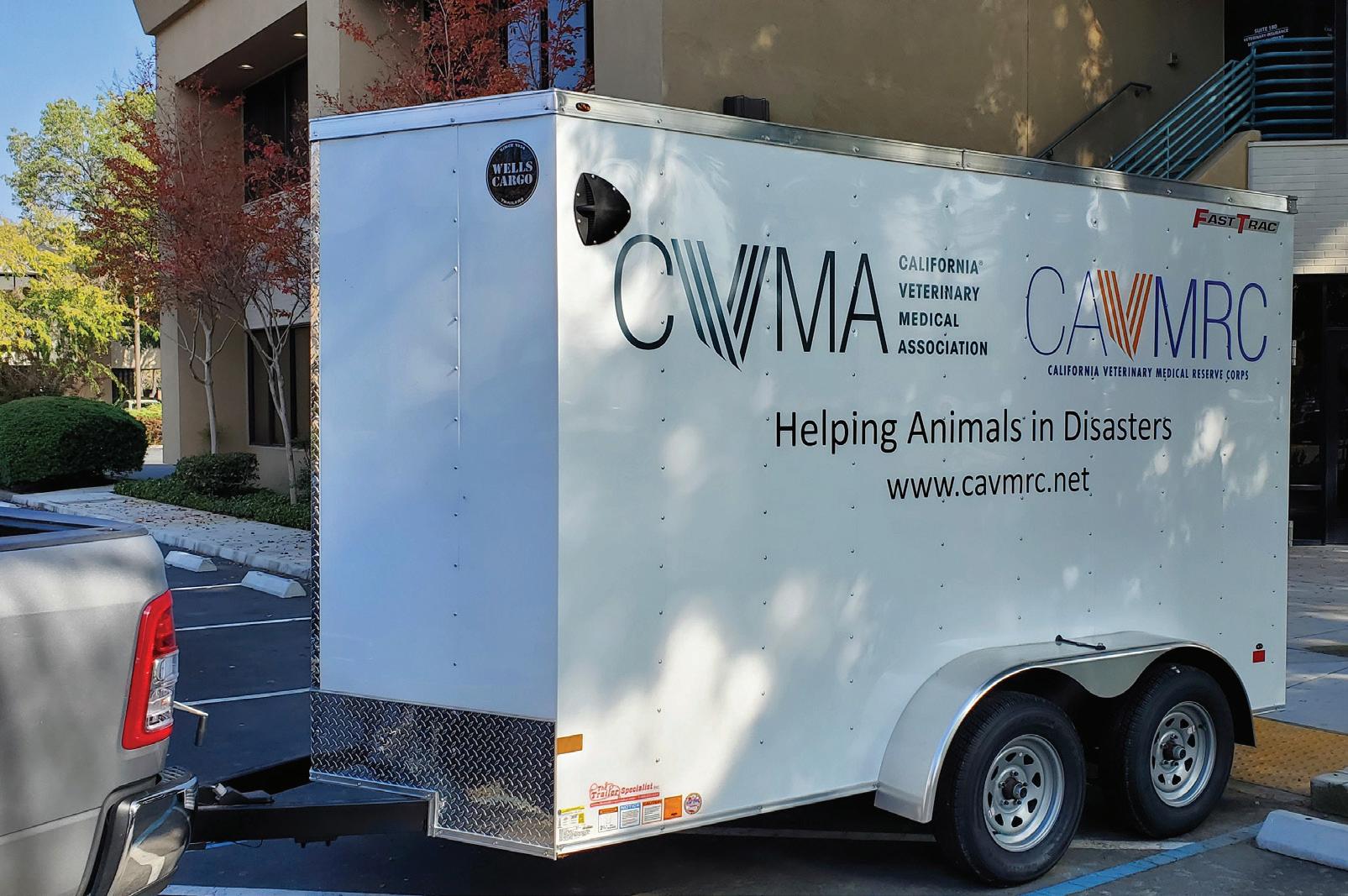
VE TERINAR Y MEDIC AL RESER VE C ORPS 18 California Veterinarian • January–February 2022 cvma.net
MRC CA C ALIFORNIA
Ask what your PAC is doing for you…
The CVMA Political Action Committee enables the CVMA to effectively advocate on behalf of the veterinary profession by cultivating and sustaining working relationships with California legislators. These relationships establish the CVMA as the go-to resource for legislators in regard to proposed legislation affecting the veterinary profession and the well-being of animals in California.

A Recent Example of CVMA Advocacy Working for You
In 2019, two pieces of legislation were introduced to address community and closed-colony canine blood banking in California. These bills would have changed the definition of commercial animal blood banks to include communitysourced blood banks where blood is collected from dogs owned by private citizens, and would have required the closed-colony blood banks in California to shut down on January 1, 2022.
The CVMA was supportive of both blood banking models but maintained that the closure of the closed-colony blood banks would result in a major shortage of whole blood and blood products, placing an untenable burden on veterinary practices to fill the void. While the 2019 bills did not become law, the CVMA continued to participate in stakeholder discussions on the issue in order to find a solution.
Accordingly, when legislation was reintroduced in 2020 and 2021, the CVMA was once again there to weigh in. Among other things, the CVMA advocated for an expert advisory committee at the California Department of Food and Agriculture (CDFA) to provide guidance resources to assist in developing best practices for community blood banking and to include provisions that would ensure both an adequate and safe blood supply. The CVMA collaborated with the 2021 bill’s author to determine a transition plan that would minimize shortages in blood and blood product supplies.
That bill was signed by the Governor on October 9, 2021 and will take effect on January 1, 2022.
This is just one example of how the CVMA effectively advocates on behalf of the profession on a myriad of bills each year that affect you, the profession, and animals in the state.
What You Can Do for Your PAC
The CVMA-PAC is funded entirely by contributions.
The California Dental Association counts 98% of its dues-paying members as PAC contributors, and other professional associations boast similar numbers. These levels of participation give those associations a correspondingly potent voice at the Capitol. In the meantime, a significantly smaller percentage of the CVMA membership is currently contributing to the CVMA-PAC. To be a powerful force at the Capitol, we need all hands on deck! Don’t let just a few of your colleagues pay more than their fair share. If everyone contributes, our ability to fight for the veterinary profession will be that much stronger!
Contributing Is Easy:
1. Online Click on the CVMA-PAC under the Government tab at cvma.net, and click on Contribute to the CVMA-PAC.

2. By mail Make a check payable to: CVMA Political Action Committee, 1400 River Park Dr., Suite 100, Sacramento, CA 95815
Join your colleagues from across the state who have donated to the CVMA-PAC. The CVMA thanks you for your support!
19 View this issue of the California Veterinarian online at cvma.net/publications.
For more , please see prescribing information on p.42









®
California Livestock Antibiograms Now Available for Veterinarians
The California Department of Food and Agriculture (CDFA) Antimicrobial Use and Stewardship (AUS) program and California Animal Health and Food Safety (CAHFS) Lab System are now offering California livestock antibiograms to licensed veterinarians.
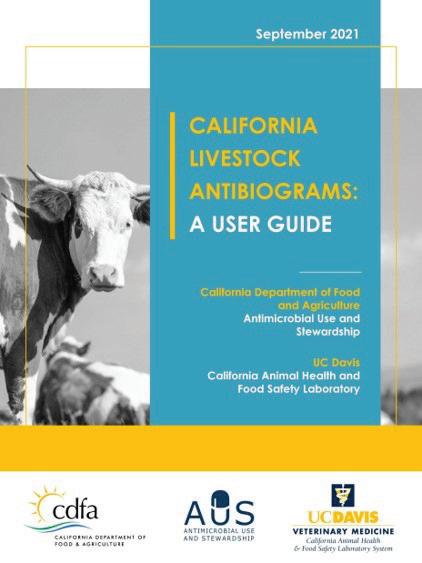
Often used in human medicine, antibiograms consist of cumulative antimicrobial susceptibility test results for a particular bacterial organism and host species combination. Antibiograms are generally developed to provide susceptibility data specific to a certain region or populace, such as a human hospital. This allows for a more precise evaluation of antibiotic resistance profiles among the target population. Antibiograms can be utilized by clinicians to guide initial antibiotic therapy and assess trends in antibiotic resistance. Antimicrobial resistance patterns can change over time and are influenced by factors like geographic region, production type, and management practices. Therefore, antibiograms are most useful when they are upto-date and specific to the population of interest. Antibiograms are important clinical tools to support a One Health approach to improving antimicrobial stewardship. However, this type of cumulative susceptibility data is seldom available in veterinary medicine, especially for livestock species.
As part of the AUS program’s efforts to establish a comprehensive antibiotic stewardship and resistance monitoring program in California, collaboration with the CAHFS Lab has resulted in the creation of California-specific livestock antibiograms for veterinary use. These antibiograms consist of anonymized data from clinical livestock samples submitted throughout the state of California over the specified timeframe.
At this time, the CAHFS Lab has generated antibiograms for bovine respiratory disease pathogens. Antibiograms for additional livestock species and bacteria will continue to be created as sufficient numbers of bacterial isolates become available. These antibiograms will be periodically updated to reflect current trends in antimicrobial susceptibility.
Due to the infrequent use of antibiograms in veterinary medicine, many practitioners may be less familiar with their format and interpretation compared to other laboratory data. The AUS program has developed a variety of educational outreach documents to help veterinarians understand and apply antibiograms in clinical practice. The first resource is a two-page infographic outlining the process of creating an
antibiogram that starts with sample submission by the veterinarian. This visual helps put into perspective the “behind the scenes” laboratory involvement in this process and describes the appropriate clinical use of minimum inhibitory concentration (MIC) data, which can be found at cdfa.ca.gov/ AHFSS/AUS/docs/AntibiogramDevelopment.pdf.
The second resource is a comprehensive user guide that explains the importance of antibiograms, their different components, and how to interpret the information provided in the antibiogram so it can be applied to clinical cases. This resource can be found at cdfa.ca.gov/AHFSS/AUS/docs/ AntibiogramUserGuide.pdf.
Antibiograms can contain a wealth of information, including susceptibility breakpoints and minimum inhibitory concentrations, or they can be simplified to show only the percentage of susceptible bacterial isolates. Some utilize shading, colors, or other means to showcase the data. The AUS user guide is tailored to highlight the specific antibiogram formats that the CAHFS Lab utilizes in the antibiograms that will be made available to veterinarians.
If you are a California licensed veterinarian and would like to sign up to receive these livestock antibiograms as they are created and updated, please complete the survey at this link: surveymonkey.com/r/antibiogram_sign_up.
CDFA 21 View this issue of the California Veterinarian online at cvma.net/publications.
Five Common Regulatory Misconceptions
By
Grant Miller, DVM, CVMA Director of Regulatory Affairs
As the CVMA’s Director of Regulatory Affairs, I speak daily with veterinarians and staff about compliance with the various state and federal laws pertaining to California veterinary practice. The following are some of the most common misconceptions encountered during those consultations.
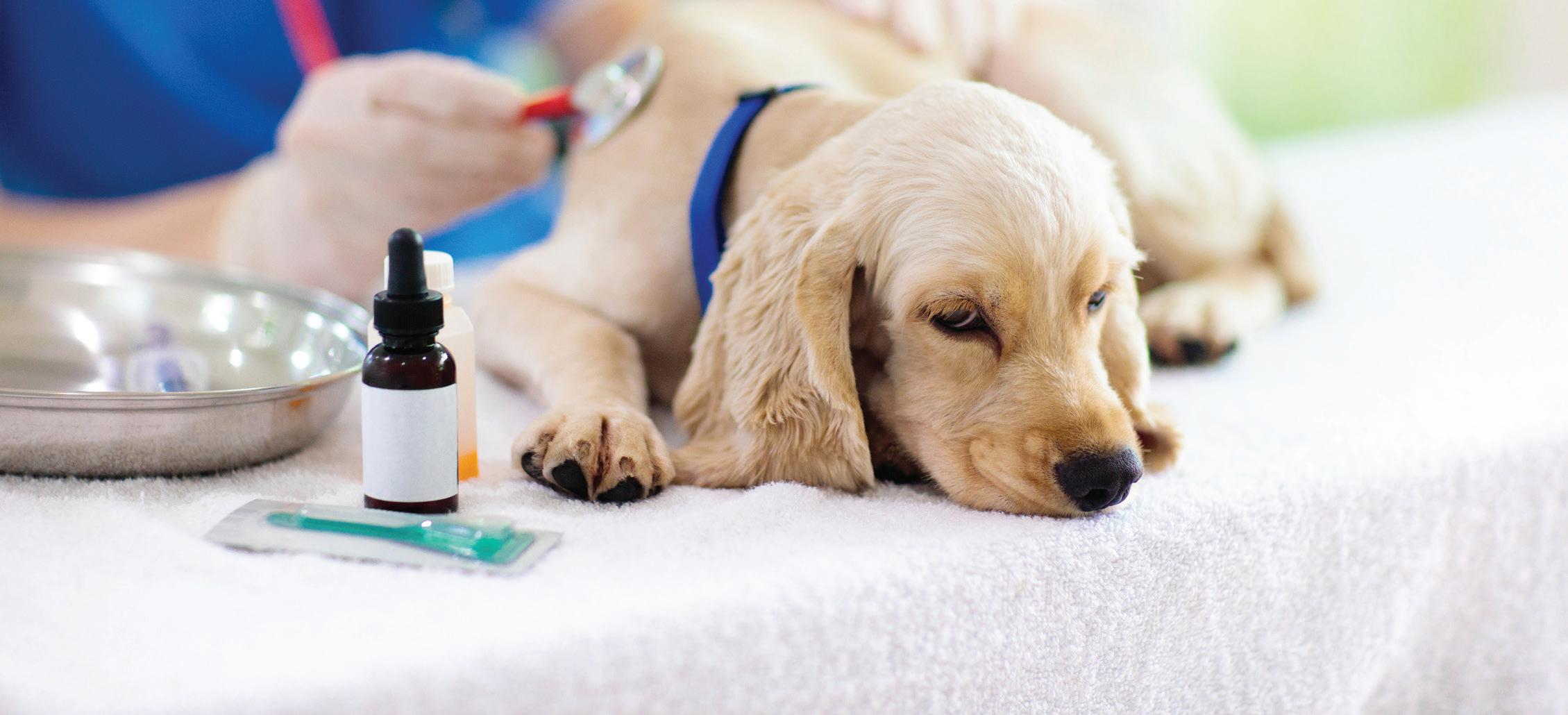
California Code of Regulations, Title 16, section 2032.1 defines the requirements of a valid VCPR. The California Veterinary Medical Board (VMB) has clearly stated that a VCPR must be established by the veterinarian for each particular condition that they treat (often referred to as the “condition-specific” requirement). For instance, if an animal patient has an appointment for vaccines in January, the veterinarian performs an appropriate examination and communicates with the client at that time in order to give the vaccines. Thus, a VCPR is established for this treatment. But if the same animal patient is limping in March, the veterinarian cannot advise, prescribe, or provide treatment for that condition
until a VCPR has been established by virtue of a personal examination of the animal and communication with the client. The fact that the animal was seen a couple of months prior is irrelevant, since the VCPR established at that time was for vaccinations and not lameness. Thus, a veterinarian may have several VCPRs for one patient. The only time that a fixed, “one year” time period is relevant to a VCPR is in relation to prescribing medications. Section (c) of the aforementioned regulation states that a drug shall not be provided for a duration inconsistent with the medical condition and type of drug, and never for a period longer than one year from the date that the veterinarian examined the animal and prescribed the drug.
California Business and Professions Code (B&P Code) section 4853 states, “all premises where veterinary medicine, veterinary dentistry, veterinary surgery, and the various branches thereof is being practiced shall be registered with the board.” The statute then states, “’Premises’ for the purposes of this chapter shall include
Compliance Corner
California Veterinarian • January–February 2022 cvma.net 22
1. “We have seen the animal within the last year, so our Veterinarian-Client-Patient Relationship (VCPR) is current.”
2. “I don’t have a hospital, so I do not need a premises permit.”
a building, kennel, mobile unit, or vehicle.” Accordingly, premises permits must be maintained for all of the aforementioned facilities, whether fixed or mobile.
3. “It is permissible for our practice to designate RVTs as ‘veterinary nurses’ and unregistered assistants as ‘veterinary technicians’.”
The law only recognizes “registered veterinary technicians/veterinary technicians/R.V.T.” and “veterinary assistants” as titles for staff in veterinary practices. While the CVMA supports the Veterinary Nurse Initiative, which seeks to retitle RVTs as veterinary nurses, B&P Code section 680(a) currently limits the term “nurse” to the human healthcare field. Also, B&P Code section 4839.5 reserves the titles “registered veterinary technician,” “veterinary technician,” and “R.V.T.” for those who are actually permitted and registered with the VMB as such. All references to non-RVT staff in the practice act refer to the term “veterinary assistant.”
4. “Another practice called for a patient’s record, so we can send it over.”
The B&P Code defines the terms of client/patient confidentiality by which a veterinarian must abide. With few exceptions (such as a subpoena, court order, or mandated reporting law), a veterinarian is obligated by law to obtain a client’s permission to release any information to a third party before doing so. Therefore, if a practice calls to request a record, it is the legal obligation of the veterinarian in possession of the record to verify with the client that the record may be released. The law identifies the ways that a veterinarian may obtain authorization from the client.
5. “We can have one DEA number for our hospital that all the doctors can share.”
According to Title 21 of Code of Federal Regulations, Section 1301.22(b), the use of one DEA number by all practice veterinarians is permitted for administering and dispensing controlled substances, but not for prescribing them.
In veterinary practices, drugs (including controlled substances) are administered when used “in house”
from the hospital stock for procedures and treatments performed on a patient. Drugs are dispensed when a veterinarian sends a client home with a supply to use from the hospital stock. Drugs are prescribed when a veterinarian gives a written authorization to a client to be filled at a pharmacy, or when a veterinarian provides verbal instructions to a pharmacy on a patient’s behalf. It is unlawful for one veterinarian to use another veterinarian’s DEA number or controlled substance prescription pad when prescribing.
According to California law, clients have the right to a written prescription in lieu of dispensed medication. Specifically, California Business and Professions Code section 4170(a)(6)-(7) states: “No prescriber shall dispense drugs or dangerous devices to patients in their office or place of practice unless the prescriber, prior to dispensing, offers to give a written prescription to the patient that the patient may elect to have filled by the prescriber or by any pharmacy and the prescriber provides the patient with written disclosure that the patient has a choice between obtaining the prescription from the dispensing prescriber, or obtaining the prescription at a phar macy of the patient’s choice.”
California Code of Regulations, Title 16, Section 2032.1Veterinarian-Client-Patient Relationship (VCPR) states that it shall constitute unprofessional conduct for a veterinarian to, among other things, prescribe a drug to a patient without first examining the patient and communicating to the client a course of treatment appropriate to the circumstance. In applying this law to veterinary practices where only one doctor has a DEA registration number, the DEA registrant cannot write prescriptions for patients without a VCPR. If the VCPR is established by another doctor, it is incumbent upon that doctor to be able to provide a prescription, and hence have their own DEA registration number.
The CVMA offers member benefits to help veterinary professionals with regulatory and legal matters including regulatory consultations—available by calling or emailing the CVMA—and 30 minutes of free legal consultation each month to member veterinarians. The legal consultation includes license defense/Veterinary Medical Board issues, employment law, and general business law. The member benefit may be accessed on cvma.net or by calling the CVMA.
This article is for informational and general educational purposes only. It is not intended to take the place of legal advice nor should it be considered as a legal interpretation. Although significant effort has been made to ensure the accuracy and completeness of the information at the time of publication, the CVMA shall not be responsible for any errors or omissions, or any agency’s interpretation, application, or enforcement of the information presented herein.
23 View this issue of the California Veterinarian online at cvma.net/publications.
Cultivating Your Practice Is a Worthwhile Investment
By
Andrea Crabtree, BS, CVPM, SPHR, PHRca, CCFP, Fear Free® Certi ed
In preparation for my forthcoming presentation at the 2022 Pacific Veterinary Conference, I want to offer some advice that will help equip practice managers to make dynamic, long-term, effective change in their practices. Minor modifications, slight adjustments, or even radical transformation in areas of team culture, employee and leadership development, communications, and the utilization of financial management tools can allow practice owners and practice managers to positively impact their business.
We begin with the indisputable proposition that the roles and responsibilities of practice owners and managers are many and varied. In the application for Certified Veterinary Practice Manager Certification (CVPM), the Veterinary Hospital Managers Association (VHMA) identifies 30 categories of duties required of a practice manager on a regular basis.1 The list of duties does not, however, break down the amount of time regularly required for each duty type. How could it? Each practice is unique and will have specific areas of need. Although Human Resource Management (HRM) duties should ideally only account for 20% of a practice manager’s routine duties, in my experience, HRM duties average about 80% of a practice manager’s time! Handling recruiting, hiring, onboarding, discipline, firing, coaching, teaching, training, performance reviews, feedback, culture, playground monitoring (yup, we do that!), camp counseling (yup, that too!), tech week, lunch and learns, payroll, timecard and time clock monitoring, and benefits all

takes valuable time. Hopefully, there is still some time for team development and leadership training and development. In the other 20% of a PM’s time, the remaining 80% of their duties, tasks, and responsibilities will be completed, somehow, someway! If 80% of a practice manager’s time is devoted to HRM, then we had better have some idea of how we can correctly manage our time with a positive return on investment and with a way to measure our results.
It takes a village to manage a practice, and practice management is nothing if not a multifaceted process. Begin that process by selecting leaders, defining roles and expectations, applying training, creating a safe space for trust and conflict, and outlining goals for commitment and accountability. No matter how talented or industrious you are, you simply can’t be everywhere every day. And if there is ever a chance to go on a real vacation, or a need to be away, the practice MUST be able to function in the practice owner or practice manager’s absence. But for that to happen, a leadership team must be cultivated first. Identify ways to leverage employees more appropriately, train and develop appropriate team leaders, and the desired results will follow.
Employees are the number one asset of any business, including veterinary practices. The life cycle of personnel management includes searching for new team members, recruiting, interviewing, onboarding and training, coaching and discipline, engagement, performance reviews, and termination. The more effective

each of these processes is, the more likely team members will remain engaged, thus reducing the likelihood of turnover.
Continuity of personnel is important for several reasons. Besides the fact that continuity promotes stability and generally reduces team discord, recruiting new team members is costly. Implementing recruiting techniques designed to discover long-term employees—and then purposefully onboarding those
24 California Veterinarian • January–February 2022 cvma.net
individuals—reduces team member turnover and allows more time, money, and effort to be invested in current team members, improving the practice culture and the overall
health of the practice. Onboarding is a process, not a task completed the first day of employment. It can take three months, six months, or even a year for a new employee to learn the practice culture. The initial onboarding experience should include welcoming by the entire team, and be demarcated by defined mileposts that both employer and employee can look to for purposes of ensuring a smooth, successful transition.
Each stage of the employee life cycle plays a major role in personnel acquisition and retention; accordingly, each stage should be carefully analyzed for effectiveness and scrutinized for improvement. If practices can recruit and retain quality employees, this increases the practice’s overall bottom line in culture, client service, patient care, and net profit.
At PacVet 2022, we will address how to make meaningful changes by working on your veterinary practice, focusing on business development, and investing in building blocks that create a sound culture and team. Learn how to create performance evaluations that leave team members encouraged to deepen their skills, and offer feedback that

is well-received by employees. Find out how to better identify potential leaders within the practice that you can develop, and how to decrease and discourage poor performance. Hone your communication skills to use with clients and employees in real-life situations that outline clear expectations and cultivate desired outcomes.

In conclusion, investing in your practice means carving out time, dedicating resources, and providing training. All of these items can be difficult to achieve when your to-do list grows every day! However, investing time now will pay off exponentially in the future. Time, resources, and training are a hot commodity in the veterinary profession. Reaping the benefits of team development, effective communication, and a healthy bottom line net income are all obtainable goals with time, resources, and training well worth the investment.
Reference
1. https://www.vhma.org/cvpm-certification/about-certification
25 View this issue of the California Veterinarian online at cvma.net/publications.
Andrea Crabtree graduated from Cal Poly Pomona with a BS in Animal Health Science in 2004. She became a Certified Veterinary Practice Manager and received her certification as a professional in Human Resources. Andrea is a Certified Compassion Fatigue Professional and is Fear Free® Certified. She is a member of the Southern California Veterinary Medical Association, the Veterinary Hospital Managers Association, and VetPartners, and she co-founded the SoCal Veterinary Manager’s Network.
Andrea Crabtree, BS, CVPM, SPHR, PHRca, CCFP, Fear Free® Certified
Plan Your Vetcation in San F ancisco PACVET 2022



June 2–5, 2022




200+ Days Sessions
15


In-Person Tracks Virtual Tracks Day Vet Expo


4 3 2 1





Vacation Destination

Taylor & O’Farrell
#PacVet2022 Hosted by the California Veterinary Medical Association
Conference Venue Where the action is!
The Pacific Veterinary Conference will be held at the Hilton San Francisco Union Square in San Francisco.






HOST HOTEL
Hilton San Francisco Union Square
333 O’Farrell Street San Francisco, California 94102
800.445.8667
Online Reservations
PacVet.net/San-Francisco/hotel-travel
DISCOUNTED ROOM RATE
$270 per night plus tax until May 31, 2022.
*Discounted rate available until deadline or until the block fills up, whichever comes first.
TRANSPORTATION DETAILS
Airports
San Francisco International Airport | flysfo.com
Oakland International Airport | oaklandairport.com
Ridesharing Services
Uber | Lyft
Public Transportation
Bay Area Regional Transit (BART) | bart.gov
27 Visit the Pacific Veterinary Conference online at PacVet.net
2022 Topics by Track
KEYNOTE PRESENTATION
The Role and Medical Management of Military Working Dogs in Combat | James Giles III, DVM, MS, DACVS-SA
SMALL ANIMAL MEDICINE – Attend In-Person or Online
• Cardiology
Heidi Kellihan, DVM, DACVIM (Cardiology)
• Dermatology
Wayne Rosenkrantz, DVM, DACVD
• Immune-Mediated Diseases, General Medicine
Andrew Mackin, BVMS, MVSc, DVSc, FANZCVSc, DACVIM (SAIM)
• Neurology
Rebecca Windsor, DVM, DACVIM (Neurology)
• Nutrition
Valerie Parker, DVM, DACVIM (SAIM), DACVN
• Oncology
Sue Ettinger, DVM, DACVIM (Oncology)
• Ophthalmology
Melanie Landry Church, DVM, DACVO
• Pharmacology
Claire Fellman, Ph.D., DVM, DACVIM (SAIM), DACVCP
SMALL ANIMAL SURGERY
• Dentistry and Maxillofacial Surgery
Graham Thatcher, DVM, DAVDC
• Orthopedic Disease, Osteoarthritis Management
Nina Kieves, DVM, DACVS, DACVSMR
• Orthopedics
Brian Beale, DVM, DACVS, ACVS Founding Fellow MIS
• Soft Tissue
Erin Gibson, DVM, DACVS (Small Animal)
AVIAN/EXOTICS
• Avian and Reptile Hematology
Victoria Joseph, DVM, DABVP (Avian)
• Avian/Small Mammals
Hugues Beaufrère, DVM, Ph.D., DACZM, DABVP (Avian), DECZM (Avian)
• Backyard Poultry
Lisa Tell, DVM, DABVP (Avian) and ACZM
• Clinical Pathology and Laboratory Medicine
Carolyn Cray, Ph.D.
• Reptiles
Scott Stahl, DVM, DABVP (Avian)
DISASTER MEDICINE
• Emergency and Critical Care
Kristin Zersen, DVM, DACVECC
EQUINE
• Infectious Diseases and Clinical Neurology
Sally DeNotta, DVM, Ph.D., DACVIM
• Invasive Surgical Procedures
Santiago Gutierrez-Nibeyro, DVM, MS, DACVS-LA, DACVSMR
• Muscle Pathology/Genetic Diseases
Stephanie Valberg, DVM, Ph.D., DACVIM, DACVSMR
HOBBY ANIMAL
• FARAD – Small Ruminants
Lisa Tell, DVM, DABVP (Avian) and ACZM
INTEGRATIVE MEDICINE
• Oncology
Kendra Pope, DVM, DACVIM (Oncology), CVA, CVCH, CVFT, CVTP
PRACTICE MANAGEMENT
• Common Practice Management Matters
Melissa Tompkins, BS, CVPM, PHRCA, CCFP
• Employer’s Rights and Responsibilities
Aaron Claxton, Wilke Fleury LLP
• Hiring, Employee Engagement, and Customer Service

Leslie Boudreau, BASVT, RVTg, CVPM, PHR, PHRca, SPHR
• Independent Contractors
Jizell Lopez, Wilke Fleury LLP
• Recordkeeping
Stephen Marmaduke, Wilke Fleury LLP
• Tools to Work on Your Practice; Employee's Life Cycle
Andrea Crabtree, BS, CVPM, SPHR, PHRca, CCFP, Fear Free® Certified
SHELTER MEDICINE
• Infectious Diseases
Elizabeth Berliner, DVM, DABVP (Shelter Medicine Practice; Canine and Feline Practice)
• Shelter and Community-Based Approaches to Animal Welfare
Cynthia Karsten, DVM, DABVP (Shelter Medicine Practice)
TECHNICIAN – Attend In-Person or Online
• Nutrition
Vicky Ograin, MBA, RVT, VTS (Nutrition)
• Physical Rehabilitation
Sandy Gregory, RVT, M Ed, VTS (Physical Rehabilitation), CCRA
• Small Animal Clinical Practice
Liza Rudolph, BAS, RVT, VTS (CP-CF, SAIM)
• Surgery
Heidi Reuss-Lamky, LVT, VTS (Anesthesia/Analgesia), (Surgery), Fear Free® Elite Certified Professional
USDA VETERINARY ACCREDITATION INITIAL COURSES
• Introduction to USDA, APHIS and NVAP
Dana Nelson, DVM, MPVM, MS
• Reportable Animal Diseases, Part A
Dana Nelson, DVM, MPVM, MS
• Animal Movement and International Health Certification Process
Lauren England, DVM, MPH
Pacific Veterinary Conference 2022 #PacVet2022 28
52 topics presented by enowned experts!
• Reportable Animal Diseases, Part B
Dana Nelson, DVM, MPVM, MS
• Hot Topics
Andrea Mikolon, DVM,Ph.D., MPVM
• Orientation to State-Specific Programs and Services
Emily Nietrzeba, DVM, MPH
USDA VETERINARY ACCREDITATION RENEWAL COURSES




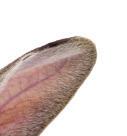

• Module 4: Preventing Disease Introduction and Spread
Emily Nietrezeba, DVM, MPH
• Module 7: Foreign Animal Disease Detection in Category I Animals
Stacy Wong, DVM
• Module 9: Interstate and International Health Certificates for Category I Animals


Lauren England, DVM, MPH
• Module 13: Aquatic Animal Health Regulations and Health Certification
Katharine Starzel, DVM, VS
• Module 18: Avian Influenza and Newcastle Disease
Dana Nelson, DVM, MPVM, MS
• Module 23: Use of Antibiotics in Animals ‡
Edie Marshall, DVM, MPVM, DACVPM
• Module 34: Veterinary Export Health Certification System (VEHCS)
Lauren England, DVM, MPH
WELLNESS
• Improvise, Adapt, Overcome; Resilience, Flexibility, Growth
Carrie Jurney, DVM, DACVIM (Neuro)
SPONSORED SYMPOSIA
• Practice Sales and Transition
Sponsored by Omni Practice Group
Rodney Johnston, MBA, CMA and Founder of Omni Practice Group
• Cancer Biology and Detection
Sponsored by PetDX
Angela McCleary-Wheeler, DVM, Ph.D., DACVIM (Oncology)
Andi Flory, DVM, DACVIM (Oncology)
Lilian Wong, DVM, MS
• Pet Insurance
Sponsored by Trupanion
Scott Huggins, DVM, MBA
SPONSORED LABS
• Lecture/Lab: Basic Abdominal Ultrasound Beginner Course
Sponsored by Universal Imaging
Jenelle Sharpley, DVM, DACVR
• Lecture/Lab: Rigid Endoscopy
Sponsored by Karl Storz Endoscopy America, Inc.
Timothy McCarthy, DVM, Ph.D.
‡This course satisfies the one-hour of California CE requirement on the judicious use of medically important antimicrobial drugs.
DATES TO REMEMBER!
Advance Registration Deadline
May 18, 2022
Pre-Registered Attendees
Registration Packet Pick-Up
June 1, 2022
5:00 PM–6:30 PM
Vet Expo Open
Friday, June 3, 2022

Saturday, June 4, 2022
HEALTH AND SAFETY PROTOCOLS
The Pacific Veterinary Conference (PacVet) is a conference of the California Veterinary Medical Association (CVMA). At both PacVet and the CVMA’s other in-person conferences, the CVMA’s top priority is the safety and welfare of attendees and staff. Accordingly, the CVMA is requiring proof of full COVID-19 vaccination for admission to all of its in-person conferences, including PacVet.

The only exemptions from the requirement of full COVID-19 vaccination will be for religious or medical reasons. Any such exemptions must be sought no less than 30 days in advance of PacVet, and shall be approved only after submission of appropriate documentation establishing the veracity of the exemption, including—in the case of a medical exemption—documentation from a qualified medical provider.
The CVMA will also follow the requirements and guidelines (such as masking) established by the Hilton San Francisco Union Square and local and state health authorities. Registrants will receive logistical information via email, including current health and safety measures, before arrival.
For full PacVet health and safety protocols, please visit pacvet.net.
29 Visit the Pacific Veterinary Conference online at PacVet.net
2022 Sponsors and Exhibitors
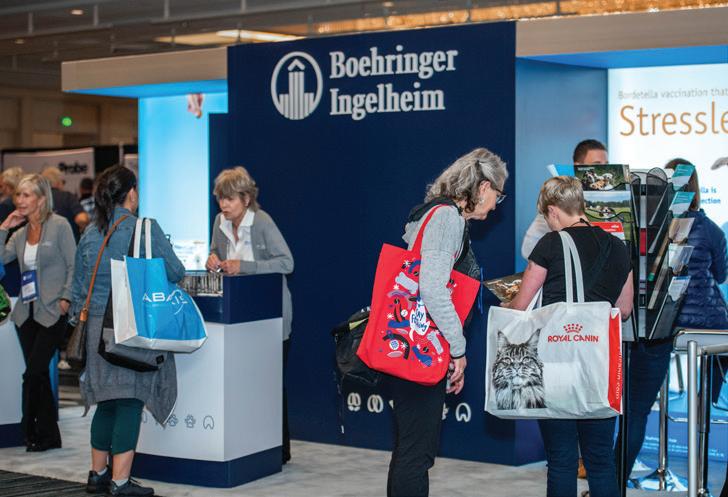
M t indust y partners!
EMERALD
ISC MRC
Analgesic Services. Inc.
Advanced Monitors Corporation
AmeriVet
Assisi Animal Health
Avid Identification Systems
Bank of America Practice Solutions
Blue Buffalo (Blue Natural Veterinary)
CNA
California Veterinary Medical Association
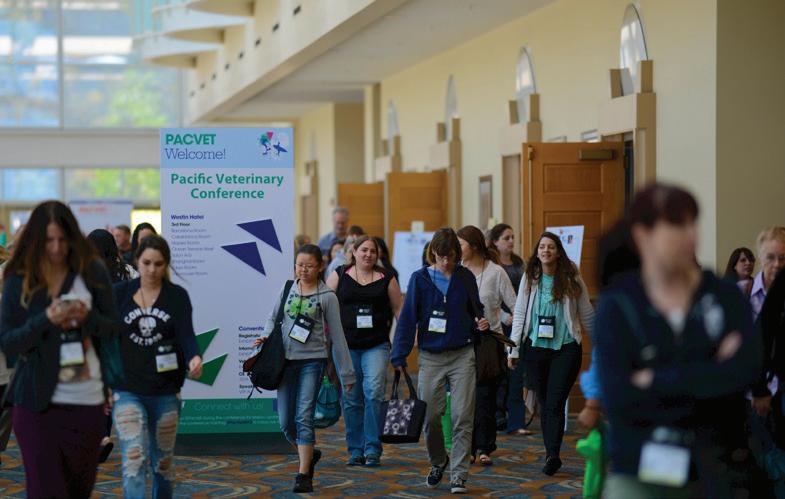
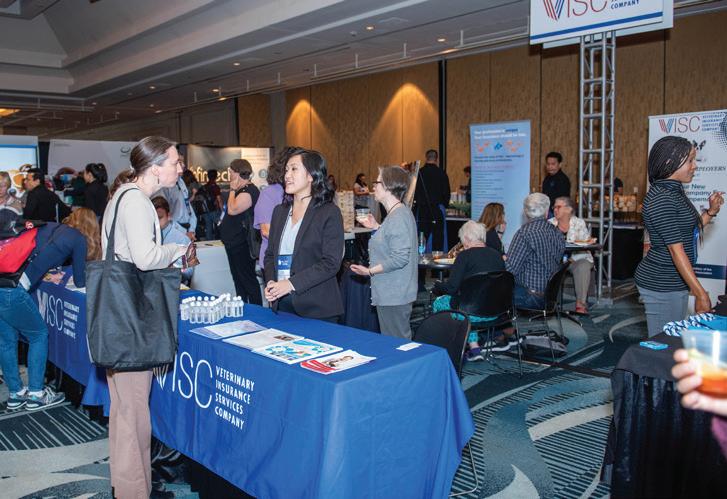

California Veterinary Medical Foundation
California Veterinary Medical Reserve Corps
CareCredit
CP Medical
Doctor Multimedia
Elanco Animal Health

Esaote North America
First Financial Bank
Flea Destroyer
Hill's Pet Nutrition
IDEXX Laboratories
Karl Storz Endoscopy-America, Inc.



Lap of Love
LogRX
Medical Illumination
Medical Pet Shirts
Midwest Veterinary Supply
Mixlab
Multi Radiance Medical
Omni Practice Group
PetDX
petMAP
Preferred Employers Insurance
Respond Systems
Samsung Ultrasound
Scratch
Solutions by Design
Standard Process, Inc.
Trupanion
Tuttnauer USA
UC Davis Veterinary Medical Teaching Hospital
Universal Imaging Inc.
VDI Laboratory
Veterinary Insurance Services Company (VISC)

VetMatrix
Victor Medical
ViziSites
Wedgewood Pharmacy
Western Veterinary Partners
TOPAZ
VET EXPO 2022 EARLY-REGISTERED EXHIBITORS CA CALIFORNIA VETERINARY MEDICAL RESERVE CORPS
THANK YOU, CONFERENCE SPONSORS
DIAMOND PREFERRED EMPLOYERS Insurance a Berkley Company DESTROYER by OCI Pacific Veterinary Conference 2022 #PacVet2022 30
as of 1/7/22
Register for the 2022 Pacific Veterinary Conference!




Early Registration Savings: Register by February 7, 2022
1. Online: It is quicker and easier to register online and pay by credit card. Visit PacVet.net.

2. Mail: Print and complete the registration form found at PacVet.net and mail or fax it with payment.
3. Call: 800.655.2862 to register over the phone.
FULL CONFERENCE REGISTRATION
Full conference registration for veterinarians, practice managers, veterinary technicians, and veterinary staff includes:
• CE sessions
• Vet Expo admission
• Continental breakfasts (all four days)



• Complimentary lunches and breaks in the Vet Expo (Friday and Saturday)
• Refreshment breaks
• Evening events
• Conference bag
• Access to all lecture notes on PacVet.net and the mobile app
GO TO PACVET.NET FOR MORE INFORMATION ON:

• Staff group registration
Tay aylor & O’Farrell
• Discount practice team registration
• Sponsoring a DVM and/or RVT student



• Guest badges
• Exhibit hall-only registration
• Terms and conditions including cancellation policy and health and safety protocols
• Virtual course offerings







3
31 Visit the Pacific Veterinary Conference online at PacVet.net
Canine Atopic Dermatitis: How to Use the Newest Drugs in Clinical Practice
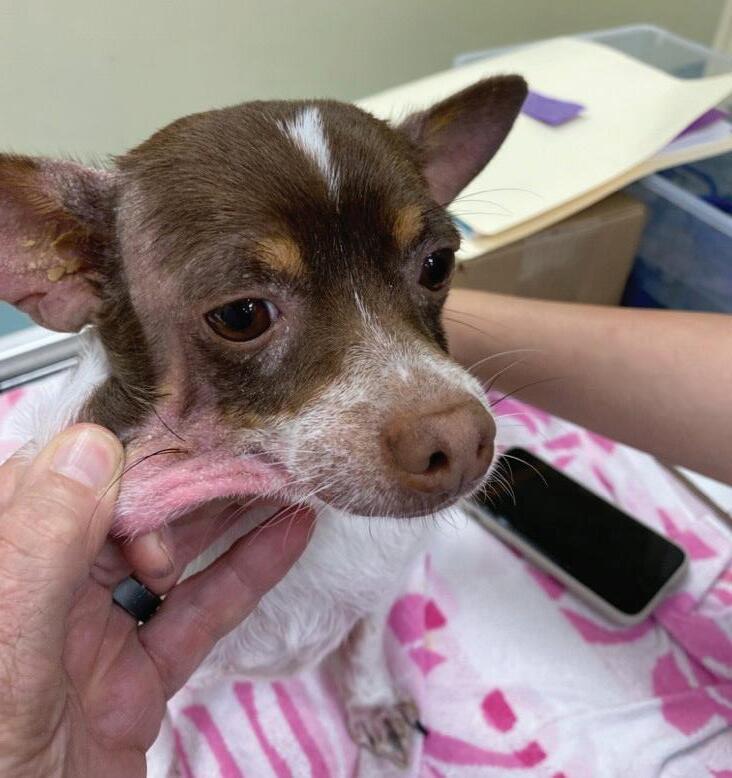 by Wayne Rosenkrantz, DVM, DACVD | 2022 Paci c Veterinary Conference Speaker By
by Wayne Rosenkrantz, DVM, DACVD | 2022 Paci c Veterinary Conference Speaker By

Oclacitinib
Oclacitinib maleate (Apoquel®) is a drug developed for the treatment of allergic diseases in dogs. It is one of a relatively new class of synthetic drugs called Janus kinase (JAK) inhibitors. Janus kinases are a group of four enzymes [Janus kinase 1-3 and tyrosine kinase (TK)] that function by facilitating the first step in transmitting intracellular signals, enabling a cytokine that has bound and activated a cell surface receptor to influence that cell. Oclacitinib acts predominantly to inhibit JAK 1. The cytokines most sensitive to JAK 1 enzyme inhibition from the highest to the lowest are IL-31, IL-2, IL-13, IL-14, and IL-6. The drug’s most potent effect is blocking the activity of IL-31, which controls pruritus activity.
Efficacy has been demonstrated in the management of pruritus associated with allergic disease in many studies. It has value in managing not only atopic dermatitis but also flea allergic dermatitis and food allergies. The dose of oclacitinib for all allergic disease cases is 0.4 to 0.6mg/kg given every 12 hours for 14 days, then every 24 hours after that. It is available in 3.6, 5.4, and 16mg tablets. Although most dogs can be effectively managed by once-daily dosing, dermatologists have found that some dogs need their once-daily dosing divided BID for control of pruritus.
Details regarding specific studies and frequency of adverse events can be reviewed in the Apoquel® product label information. A long-term compassionate care study of clientowned dogs with allergic skin disease showed improvement in Visual Analog Scale scores from baseline at all time points. The percentage of dogs showing ≥50% reduction from baseline on day 90 was 63.9% for pruritus and 66.4% for dermatitis. Owners saw a positive impact on quality of life in more than 91% of all dogs. Urinary tract infection/cystitis, vomiting, otitis, pyoderma, and diarrhea were the most frequently reported (>5% of dogs) abnormal clinical signs. Hematology and serum chemistry levels remained within the normal reference ranges. Concomitant medications were well tolerated.
The association of Apoquel® with neoplasia was recently evaluated in a study performed at the author's practices, comparing malignancies and non-malignant skin masses in 339 allergic dogs receiving long-term (>6 months) oclacitinib with age- and breed-matched control populations. There was no statistical significance regarding the dose
of oclacitinib on the cumulative incidence of malignancy or masses. The author typically avoids using Apoquel® in dogs with any history of pre-existing neoplasia and dogs with deep infection, history of demodicosis, or severely immunocompromised dogs. It is contraindicated for use in breeding dogs or pregnant or lactating bitches. It has been used in limited cases with concurrent low-dose glucocorticoids or cyclosporine (CSA) for short periods of time with no increase in incidence of side effects. The author currently performs pre-Apoquel® chemistry profiles, complete blood counts, and urinalysis testing. This is repeated at 6-month intervals in patients on continuous therapy. Patients also need to be monitored for the development of clinical infections while on long-term therapy.
CytopointTM—Caninized Anti-cil-31 Monoclonal Antibody (Mab)
Monoclonal antibodies are complex large protein molecules that are developed by utilizing recombinant DNA technology that mimics the natural immune response in the body. They are designed to have target specificity and have minimal side effects. CytopointTM is a caninized anti-canine interleukin-31 (IL-31) monoclonal antibody. IL-31 has been shown to induce pruritus in dogs in laboratory studies. Lokivetmab is the active ingredient
32 California Veterinarian • January–February 2022 cvma.net
1
contained in CytopointTM. Lokivetmab has the advantage of being extremely targeted and having a very long halflife, remaining in circulation for several weeks. The label allows for repeated administration, monthly, or as needed.
There are many clinical trials involving client-owned dogs with atopic dermatitis, with dosages around 2 mg/kg showing marked reduction in pruritus within 1–3 days of administration with effectiveness for 1–2 months. Clinical trial side effects in most studies have been minimal, manageable, and similar to placebo, but may include extremely rare gastrointestinal upsets, lethargy, or pain at injection sites. A wide variety of concomitant medications can safely be used, including parasiticides, antibiotics, antifungals, corticosteroids, vaccines, immunotherapy, antihistamines, and other antipruritics, such as oclacitinib and cyclosporine. In some chronic refractory cases, combination Apoquel®
and CytopointTM can be effective when one therapy alone does not work (Figure 1 ). More repetitive, reduced interval of injections or higher dosing can help in some of the cases that do not initially respond as well. In one study, lokivetmab led to a significant reduction of CADESI 04 and pruritus within four weeks, but its maximum effect was achieved after the second dose. In addition, Zoetis data suggests that it may take up to three monthly injections before the full benefit on pruritus reduction is seen.
I use CytopointTM commonly during the beginning of immunotherapy and at the start of diet trials in dogs less than one year of age, although it may not be as good as oclacitinib during dietary trials due to its variable duration of activity. It can be used as a long-term monotherapy or as part of multimodal therapy in chronic atopic dermatitis cases. It has appeared very safe, with minimal adverse reactions.

Selected References
1. Cosgrove SB, Wren JA, Cleaver DM, et al. Efficacy and safety of oclacitinib for the control of pruritus and associated skin lesions in dogs with canine allergic dermatitis. Vet Dermatol 2013;24:479-e114.
2. Cosgrove SB, Wren JA, Cleaver DM, et al. A blinded, randomized, placebocontrolled trial of the efficacy and safety of the Janus kinase inhibitor oclacitinib (Apoquel®) in client-owned dogs with atopic dermatitis. Vet Dermatol 2013;24:587-597, e141-582.
3. Wheeler DW, Civil J, Payne-Johnson M, et al. Oclacitinib for the treatment of pruritus and lesions associated with canine flea-allergic dermatitis. Vet Dermatol 2012;23(suppl 1 WCVD abst):38-39.
4. Cosgrove SB, Cleaver DM, King VL, et al. Long-term compassionate use of oclacitinib in dogs with atopic and allergic skin disease: safety, efficacy and quality of life. Vet Dermatol 2015;26:171-e135.
5. Lancellotti B. Angus J, Edginton H, et al. Comparison of malignancies and non-malignant skin masses in 339 allergic dogs receiving long-term (> 6 months) oclacitinib with age and breed matched control population. Abstracts of the North American Veterinary Dermatology Forum, April 10–13th 2019, Austin, Texas, USA. Vet Dermatol, 30: 40, doi:10.111/vde.12750.
6. Little PR, King VL, Davis KR, et al. A blinded, randomized clinical trial comparing the efficacy and safety of oclacitinib and ciclosporin for the control of atopic dermatitis in client-owned dogs. Vet Dermatol 2015;26:23-30, e27-28.
7. High, EJ, Lam, ATH, Ferre, L. A retrospective study comparing the incidence of cutaneous histiocytoma development in atopic dogs treated with oclacitinib and ciclosporin (2017), Abstracts of the North American Veterinary Dermatology Forum 26–29 April 2017 Orlando, FL, USA. Vet Dermatol, 28: 426-455. https://doi.org/10.1111/vde.12452
8. Data on file SRNCR-U--, Zoetis LLC.
9. Data on file SRNCR-U--, Zoetis LLC.
10. Krautmann M, Miller, W, Walters, R, Garcia-Tapia, D, King, V, figueriredo, J, Hoover, D. Long-term laboratory safety study of lokivetmab (ZTS-00103289), a caninized, anti-canine IL-31 monoclonal antibody, in normal dogs. World Congress Veterinary Dermatology. Bordeux, France, 2016.
11. Szczepanik MP, Popiel J, Cekiera A, et al. Evaluation of the clinical efficiency of lokivetmab in client privately owned atopic dogs - multicenter study. Pol J Vet Sci. 2020 Jun;23(2):191-195. doi:
12. Vincent AL, Lams ATH, Marcussi CS, et al. A retrospective study to assess anti-pruritic efficacy of lokivetmab in dogs with canine atopic dermatitis. Proceedings from NAVDF, Orlando, Fl 2017;42.
13. Wright A, Amodie D and SousaC. Retrospective study of the interval between injections of cytopoint in clinical practice. Proceedings from NAVDF, Orlando, Fl 2017:226.
14. Souza A, Schissler JR, Rosychuk R, et al. Lokivetmab in the control of pruritus in 135 dogs with allergic dermatitis. Proceedings from NAVDF Orlando, Fl. 2017;43.
33 View this issue of the California Veterinarian online at cvma.net/publications.
Dr. Wayne Rosenkrantz is a graduate of the University of California, Davis and completed his residency training in private practice. He is a past-president of the American College of Veterinary Dermatology and is co-owner of Animal Dermatology Clinics. He is a co-editor of the text Veterinary Allergy
Wayne Rosenkrantz, DVM, DACVD
Something to Wag About




Congratulations to....













































Dr. Chris Cowing, a CVMA past president, for being honored by the Foster City Council for his longstanding contributions to veterinary service, including 32 years of running the Animal Cove Pet Hospital and Clinic. A veterinarian for 47 years who retired in May of 2021, Dr. Cowing spent long stretches of his career as the only veterinarian in Foster City, thus becoming a well-known figure in his community. Dr. Cowing, congratulations on this well-deserved honor, and enjoy your retirement!


Dr. Ashley Hill, for her appointment to the position of Associate Dean for Veterinary Diagnostic Laboratory Operations and Director of the California Animal Health and Food Safety Laboratory at UC Davis. A professor of Clinical Diagnostic Epidemiology at UC Davis, Dr. Hill also currently serves as a member on the CVMA Agriculture Committee. We are excited to see Dr. Hill thrive in her new role!
Leah Shufelt, RVT, for being elected Vice President of the Multidisciplinary Advisory Committee (MDC) of the Veterinary Medical Board (VMB). A longstanding and active member of the CVMA, Leah is Chair of the Registered Veterinary Technician Committee, a delegate for the CVMA House of Delegates, and the RVT Representative for the CVMA Board and Invitees, among other roles. The CVMA wishes Leah a prosperous term as the MDC Vice President!
Marie Ussery, RVT, for being appointed as a new member of the MDC of the VMB. Marie is also currently the District VII Representative on the CVMA’s RVT Committee as well as a delegate for the CVMA House of Delegates. Congratulations on your recent appointment, Marie!

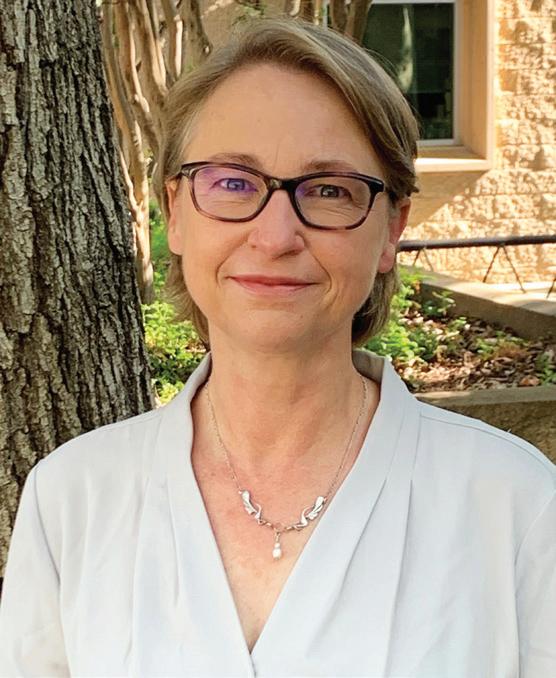
Do you have something to wag about?
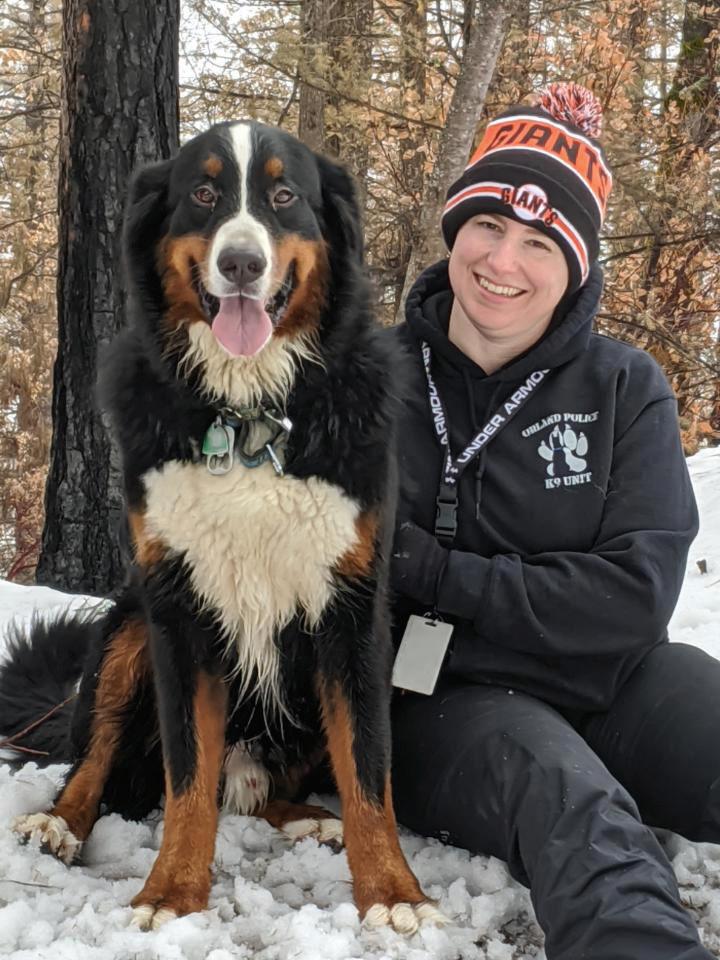
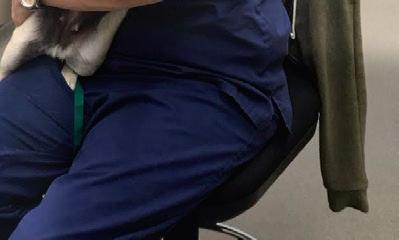
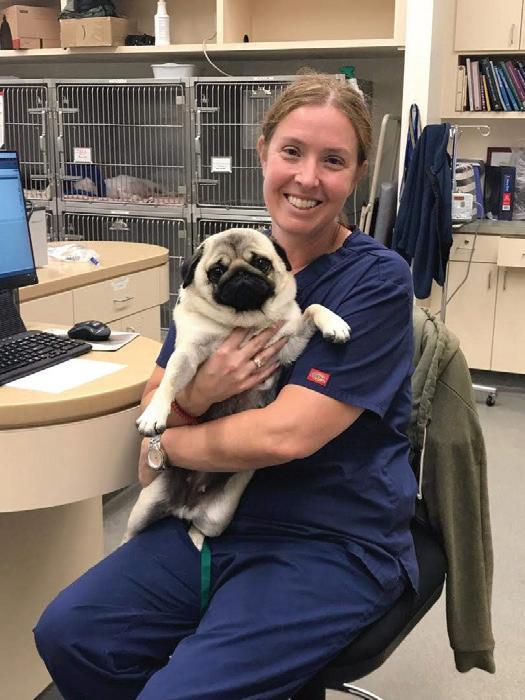
We want to help celebrate your good news! Did you purchase or sell a practice? Did your practice staff do something remarkable? Have you celebrated a big life moment, such as getting married, starting a family, or retiring? These are just a few examples. Send your exciting announcement and a picture for consideration to tdeoilers@cvma.net.



34 California Veterinarian • January–February 2022 cvma.net
CVMA Board of Governors Openings
The CVMA Board of Governors is comprised of 15 governors consisting of 11 geographic representatives and four atlarge members. The following terms on the CVMA Board of Governors expire on June 30, 2022.
District Representation
Any eligible CVMA members may become a candidate for the Board by submitting a written petition of intent, signed by 10 CVMA members whose practices are within the district to be represented.
Download the petition by visiting cvma.net and click on Get Involved under the About CVMA tab, or contact Patsy Lynn at the CVMA at 800.655.2862. Completed candidate district petitions must be returned to the CVMA office by March 28, 2022.
District Openings
District II—Counties of Los Angeles, Orange, and Antelope Valley
• Dr. Jennifer Hawkins, eligible for another term
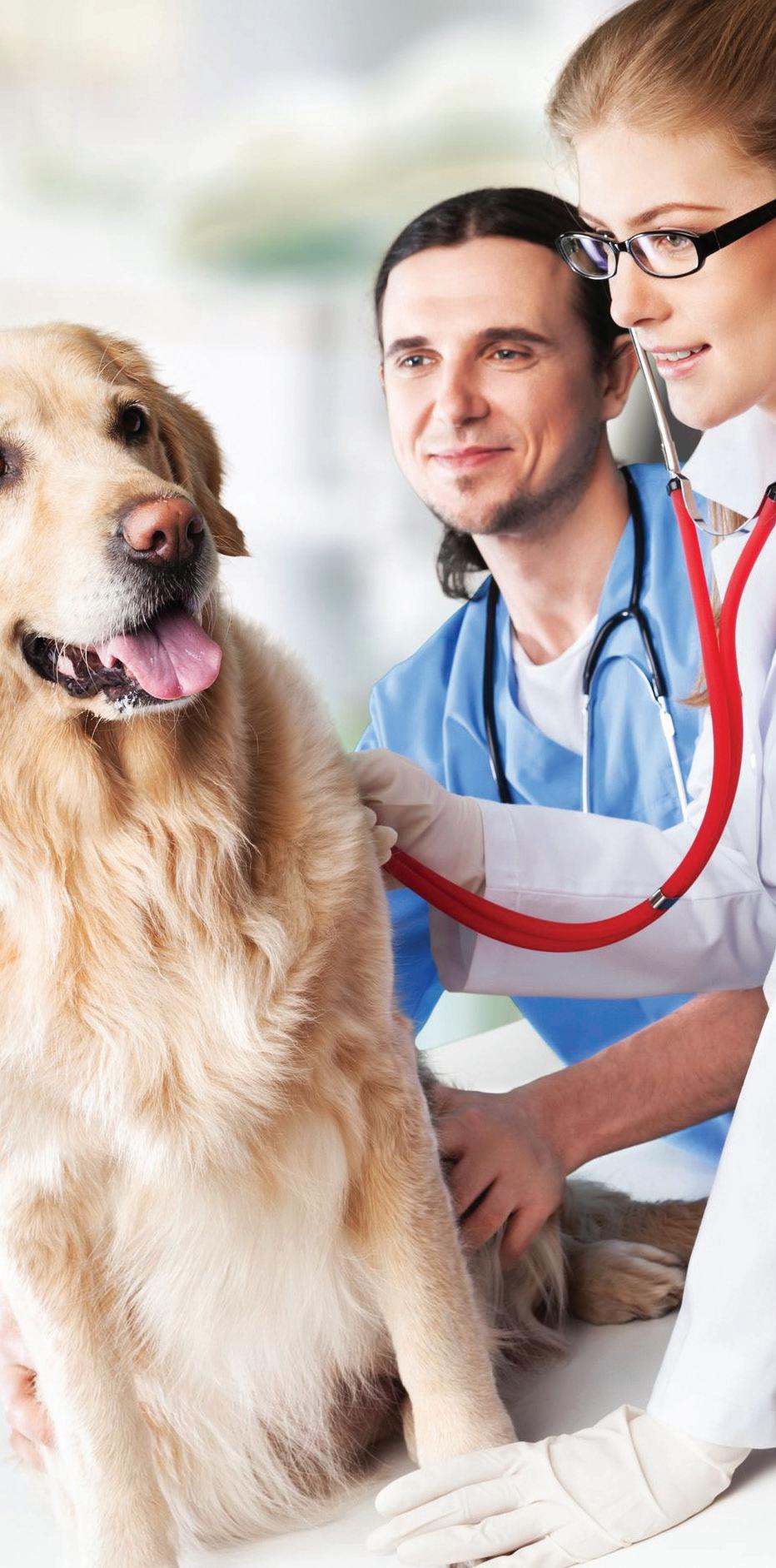
• Dr. Dirk Yelinek, not eligible for another term
District IV—Counties of Monterey, San Benito, San Luis Obispo, Santa Cruz, Santa Barbara, and Ventura
• Dr. Patrick Connolly, eligible for another term
District VII—Counties of Del Norte, Humboldt, Marin, Lake, Mendocino, Butte, Colusa, Plumas, Sutter, Glenn, Lassen, Modoc, Shasta, Sierra, Siskiyou, Tehama, Trinity, Sonoma, Nevada, and Yuba
• Dr. Larry Correia, not eligible for another term
At-Large Board of Governors Applications
Applicants for the at-large Board position may not simultaneously run for an elected district Board position. After receiving letters of interest and applications from qualified CVMA members, the CVMA’s Leadership Development Committee shall evaluate candidates for the open at-large position. Existing at-large governors must complete an application for a second term.
To view the at-large position description and download an application, visit cvma.net or contact Patsy Lynn at 800.655.2862. Completed at-large applications must be returned to the CVMA office by February 1, 2022.
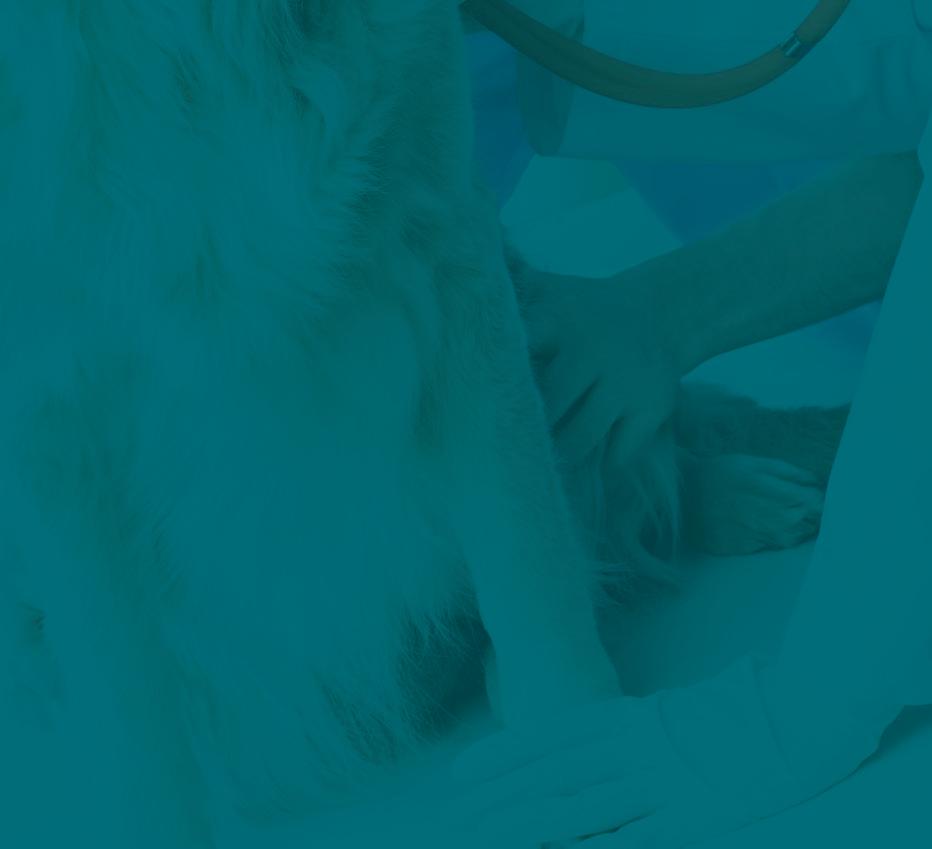
Governor-at-Large
• Dr. Elisabeth Klapstein, not eligible for another term
35 View this issue of the California Veterinarian online at cvma.net/publications.
In Line Veterinary Safety & Compliance
PRACTICE SAFETY REGULATORY COMPLIANCE What is the CVMA InLine Program? Visit cvma-inline.net or call 800.655.2862. CVMA InLine is a dynamic workplace safety and compliance program designed to assist CVMA members with workplace safety, employment issues, and laws and regulations that affect the veterinary profession.
LEGAL ISSUES
Welcome, New Members!
Veterinarian
Dr. Bret Andrea
Dr. Brian Arnold
Dr. Michelle Bouchard
Dr. Kara Carroll
Dr. Kendra Decile
Dr. April Durtschi
Dr. Erin Evans
Dr. Melanie Fratto
Dr. Yenlie Furman
Dr. Kamaldeep Gaheer
Dr. Susanne Galin
Dr. Hector Gonzalez
Dr. Candice Habawel
Dr. Christina Haney
Dr. Zarah Hedge
Dr. Emily Hobson
Dr. Kelly Horgan
Dr. Sophia Jakymiw
Dr. Mark Johnson
Dr. Nilanthi Kulasekara
Dr. Rachel Landesfeind
Dr. Daniela Leumer
Dr. Jerry Long
Dr. Kasey Lott
Dr. Jennifer Lynn
Dr. Sarah Mathews
Dr. Clinton McKnight
Dr. Fredrick Minazzoli
Dr. Frances Mueller
Dr. Garry Nagra
Dr. Kathryn Nenneker
Dr. Lara Orme
Dr. Amanda Owens
Dr. William Pilcher
Dr. Robert Righter
Dr. Mary Sakai
Dr. Arthur Sanders
Dr. Laura Schwartz
Dr. Monika Scott
Dr. Shane Sheets
Dr. Margaux Siongco
Dr. Clarity Skeen
Dr. Catherine Sohn
Dr. Kenneth Steele
Dr. S. Kwane Stewart
Dr. Nicole Thompson
Dr. Christina Tolman
Dr. Amy Vail
Dr. Tarra Vickery-Williams
Dr. Philippe Villard
Dr. Kieu Vuong
Dr. Tim Walters
Dr. Richard Yi
Dr. Zachary Zeisse
Veterinarian Faculty
Dr. Janelle Emmett
Dr. Annika Linde
Dr. Rebecca Yates
Veterinarians –Out-of-State
Dr. Jeffrey Lakritz
Dr. Carolyn Luther
Veterinarian Interns/Residents/ Post-Graduates
Dr. Caitlin O’Shea
Veterinarian 1st Year Graduates
Dr. Elaine Alexander
Dr. Caitlin Birky
Dr. Andrea Chivers
Dr. Aubrey Collord
Dr. Kenneth Cook
Dr. Jodi Ellis
Dr. Patricia Kalinichenko
Dr. Kate Kim
Dr. Yvette Lopez
Dr. Kayleigh Marlin
Dr. Ashley Nakaoka
Dr. Jennifer Nguyen
Dr. Jessica Padmanabhan
Dr. Monique Reid
Dr. Haleigh Rivas
Dr. Rebecca Shieh
Dr. Mason Ureche
Dr. Tiffany Yee
Veterinarian 2nd Year Graduates
Dr. Lydia Cain
Dr. Emily Campbell
Dr. Myriah Chase
Dr. Tahirany Diaz
Dr. Travis Hamilton
Dr. Sydney Hsieh
Dr. Samuel Mueller
Dr. Ani Sefildzhian
Dr. Kelly Sterbentz
Dr. Rachel Talpalatsky
Dr. Rachel Unger
Dr. Hamida Valji
Veterinarian 3rd Year Graduates
Dr. Carolyn Neilson
Dr. Kelsey Willis
Veterinarian 4th Year Graduates
Dr. Kristin Armstrong
Dr. Eva Quijano Carde
Dr. Matthew Rietveld
Registered Veterinary Technicians
Mezti Alberto Torres, RVT
Molly Boesing, RVT
Odessa Boettger, RVT
Ally Bredeson, RVT
Kimberly Clay, RVT
Ann Michelle Cross, RVT
Timothy Dahl, RVT
Jennifer Delgado, RVT
Rene Espindola, RVT
Caroline Franko, RVT
Camille Fraser, RVT
Briana Garcia, RVT
Carla Gee, RVT
Darlene Geekie, RVT
Juan Gonzalez, RVT
Kellen Guadagno, RVT
Arlene Hall, RVT
Donald Hamilton, RVT
Evan Hendrickson, RVT
Amanda Herrera, RVT
Kejera Jolly, RVT
Ashley Kane, RVT
Vanessa Kenny, RVT
Angela Killips, RVT
Janni Kimble, RVT
Kaylen Lafferty, RVT
Sarah Laraway, RVT
Ryleigh Linton, RVT
Shelee Lyon, RVT
Natalie Martinez, RVT
Janae Moser, RVT
Elizabeth Panduro, RVT
Christian Pitts, RVT
Charlotte Potter, RVT
Sharifa Rastegar, RVT
Maribel Resendiz Ramos, RVT
Norma Reyes, RVT
Bianca San Elias, RVT
Jennifer Sawyer, RVT
Carly Smith, RVT
Alexus Staat, RVT
Frank Valdez, RVT
Sharon Vaturi, RVT
Deborah Vaughn, RVT
Bianca Velasquez, RVT
Justine Wood-Graves, RVT
CVMA Certified Veterinary Assistants
Elizabeth Alvarez, CVMA CVA
Sandra Fierro, CVMA CVA
Shelby Hine, CVMA CVA
Carol Meserve, CVMA CVA
Benjamin Nokleby, CVMA CVA
Bailey Pyle, CVMA CVA
Haley Richardson, CVMA CVA
James Santoro, CVMA CVA
Angela Taylor, CVMA CVA
Veterinary Hospital Staff
Vincent Felder
Jennifer Ries
Veterinary Students – California
Rebecca Abel
Hailey Adler
Henry Aguila
Emily Alfaro
Lindsay Allen
Elizabeth Anderson
Aleksandra Antoszewski
Lindsey Archer
Hanna Atiyeh
Joseph Awada
Amanda Ayers
Alexis Bagby
Joseph Baldetti
Paige Barton
Lauren Belloff
Hailey Bernal
Asiya Bhaisaheb
Katrina Billote
Savanna Blair
Morgan Bowman
Jess Bravos
Andrea Brkic
Megan Brobst
Jaimie Brown
Matthew Burke
Gina Casaccia
Tarra Catalano
Nuntaporn Charernsuk
Vanessa Chavez
Jamie Cheong
Pamina Chong
Vy Chu
McKenna Chui
Hannah Clevenger
Jessica Coe
Shannon Cook
Evan Cosgrove
Michelle Cowell
Lauren Croquenois
Ariana Daldemian
Danielle Damico
Brittany Davis
Aaron de Buck
Christina Di Bernardo
Sherry Dijkstra
Tram Do
Catherine Dombroski
Shannon Donahue
Madison Dunkin
Alexis Durant
Jillian Eicher
Sebastian Elsenbroek
California Veterinarian • January–February 2022 cvma.net 36
Natalie Engs
Christina Espinosa
Carli Fawcett
Yuchen Feng
Alejandra Figueroa
Ashleigh Flores
Michael Forbes
Susan Fredericks
Claire Freson
Alexander Fu
Edward Galfayan
Zoe Gant
Kathryn Garcia
Ivonne Garrido
Mary Garrison
Meredith Geissinger
Cameron Gheith
Kiara Gilardi
Natalia Gilbert
Sarah Gill
Nicole Gonzales
Emani Green
Jennifer Grimes
Kristianne Guevara
Rebecca Hagelberg
Stephanie Han
Morgan Hardie
Scarlett Harrison
Emily Henkels
Nicole Herb
Jennifer Hernandez
Luke Hernandez
Stephanie Hidai
Susan Hinchey
Ethan Hirose
Trevor Hisanaga
Nicole Hoang
Lindsay Hom
Victoria Houston
Kevin Huang
Jane Hutchison
Ramya Jois
Eunice Kahng
Anastassiya Kantserova
Saiisha Kaushal
Savannah Kawahata
Micaela Kent
Annie Kim
Yoora Kim
Josie Knieriemen
Kelley Kramer
Avery Kuhlow
Chandrika Kumar
Riya Kurian
Melissa Lacher
Paige Lampron
Olivia Lang-Brown
Jennifer Le
Nhan Le
Brittany Lee
Ji-Hyun Lee
Joohee Lee
Kaitlin Lee
Nicole Lent
Tianjiao Li
Jessica Lin
Mindy Liou
Brooke Littman
Vivian Liu
Gwenevere Lockrey
Kelsey Long
Paulina Lopez
Anna Lu
Emily Lubach
Kyla Lubker
Alyssa Ma
Nathan Ma
Sergio Madrigal
Tamar Maljian
Avery Mandel
Nyah March
Emma Marshall
Angelica Martinez
Mariana Martinez
Shannon Mathis
Michelle McCorkell
Ariana McKenzie
Keely McLaughlin
Sarah Meil
Brooke Migdal
Alexandra Milkey
Sarah Mirjavadi
Nazleen Mohseni
Maria Molina Velandia
Karen Molina Zaldivar
Donald Molloy
Katherine Montejano
Rebecca Moore
Paxton Moreno
Catharine Morgan
Danielle Myers
Suzy Nam
Ethan Nobles
Tyler O’Brien
Danielle Oertle
Helen Onuffer
Lisa Pacumio
Allison Pari
Cassandra Parker
Andrea Patino
Yerania Pelaez Cordova
Samantha Perez
Serena Perez
Kelly Pham
Angella Phan
Aria Phan
Jamie Pincin
Heather Piotrowski
Antoinette Piraino
Alexandra Ponkey
Courtney Post
Meghan Poth
Rachel Poulo
Lauren Prince
Cheok Pun
Courtney Railton
Raneesh Ramarapu
Alexa Ramirez
Dionne Rasquinha
Heather Raymond
Emily Reese
David Rodriguez
Anna Roethler
Caitlin Rolle
Carissa Romero
Ryan Romero
Sean Rowan
Jacob Ruiz
Alexis Rye
Sawyer Sahlinger
Haley Salas
Christina Sanchez
Jacqueline Sanchez
Stephanie Sandy
Tamesis Santiago Merced
William Saumier
Victoria Schultz
Alex Serna
Erin Shen
Ella Sherman
Valerie Sherwood
Carrie Shih
Kulani Simafranca
Noel Simms
Nicole Singh
Nicole Sinou
Aubrey Smith
Carissa Smith
Sarah Smith
Christina Sosnowski
Shelby Suzuki
Sierra Temple
Emily Tepler
Connor Theis
Anna Thompson
Madeleine Thompson
Quentin Thouvenot
Angelica Touze
Kelsee Tran
Taylor Traxler
Tyra Tse
Mikayla Underwood Aguilar
Christina Vagenas
Isabel Vaishampayan
Kimya Vazindel
Savanah Vieira
Tirragen Vixie
Alena Wang
Brian Wang
Derrick Wang
Winnie Wang
Christine Wastila
Lauren Watson
Samantha Watts
Mina Weakley
Callie Wilcox
Kaitlyn Wilkerson
Bryan Williams
Katelyn Williams
Riley Wilson
Elisabeth Wolfe
Theresa Wong
Su Hyun Yang
Alexis Ybarra
Abhiram Yellamilli
April Yoshihara
Kathryn Young
Devanne Zalewski
Hrair Zeitounian
Daniel ZGodzay
Danielle Zuk
Dominique Zuk
Charlize Zuraek
Weigh Your Options with an Accurate Valuation
Why choose Gatto McFerson to conduct your practice valuation?
• We have valued over 315 veterinary practices and clinics

• We have the tax expertise you need when buying or selling
• We are Accredited in Business Valuations, a certification that only CPAs can hold
• We are an independent adviser with no financial stake in the transaction
We are experts in all aspects of:
• Buying and selling a veterinary practice or clinic
• Facilitating associate buy-ins
• Preparing an exit strategy
• Creating an estate plan
• Increasing the value of your practice
To maximize value and minimize taxes, contact:
Lou Gatto, CPA lou@gattomcferson.com
Tom McFerson, CPA, ABV tom@gattomcferson.com
528 Arizona Ave. Suite 201 Santa Monica, CA 90401
Ph: 310-393-2434
Fax: 310-393-8777
www.gattomcferson.com
37 View this issue of the California Veterinarian online at cvma.net/publications.
Geriatric Care
By
by Sandy Gregory, M Ed, RVT, VTS (Physical Rehabilitation), CCRA | 2022 Paci c Veterinary Conference Speaker

Aging is inevitable. Some of us know this better than others. Whether you are a human, bird, cat, dog, equine, or anything in between, you will be subject to naturally occurring aging processes.
Human medicine refers to a “senior” as someone who has reached the age of 65. In a newsletter from the American Society of Aging (ASA, 2007), an article titled “Ageism in Language” asked the following question to readers: “What term(s) do you think are appropriate when referring to people aged 65-plus?” The most commonly used expressions that individuals thought ‘appropriate’ were:
Older adults = 80%
Elders = 41%
Seniors = 33%
Senior citizens = 11%
Elderly = 10%
According to these responses, it’s clear that our definition of a senior has changed. As life expectancy increases, our perception of “elderly” shifts. This is true of animals as well. We are taking much better care of our pets. With the availability of the internet, shopping online, informed veterinary staff, scientific advancements, and a higher level of commitment, our pets are living longer.
According to the American Veterinary Medical Association, cats and small dogs are generally considered “senior” at seven years of age. Larger breed dogs tend to have shorter life spans compared to smaller breeds and are often considered senior when they are five to six years of age. Gone are the days when we equated one human year to seven dog years.
Geriatric is a term that identifies someone as being fragile or just old. Whether we think of animals or humans, there is no clear age to use these terms.
Aging is not a disease in itself but a process that happens. The rate of changes is what contributes to the term we might use to describe a person’s or animal’s stage of life. Here are examples of some of those processes:
Incontinence
Gait changes
Cognition changes
Sleep disturbances
Loss of appetite
Neurological deficits/changes
Cardiovascular changes
Endocrine changes (less ability to deal with stress)
Decreased mobility
Muscle mass loss
Pain
And much more
You can look through this list and apply almost all of the changes to any of our older pets.
Speaking of one of the items listed above, we need to consider muscle conditioning scoring as important as body condition score, if not more. In that regard, consider how bone health = muscle health.
Muscles exert a loading force on bones, which helps maintain the latters’ density and shape. Over time, muscular deterioration can affect the body carriage of the pet. We see this in the way they move and in the lack of symmetry in posture.
Stimulation is important for any living thing but possibly more so for the geriatric. Stimulation comes in many forms, whether it is mental stimulation through games or change in the environment itself. You can place treats around the house for cats to search for, stimulating their natural instinct for hunting (leave the treats on the ground for arthritic cats to discourage jumping). For small pocket pets, hide the treats in paper bags, wrap them in toilet
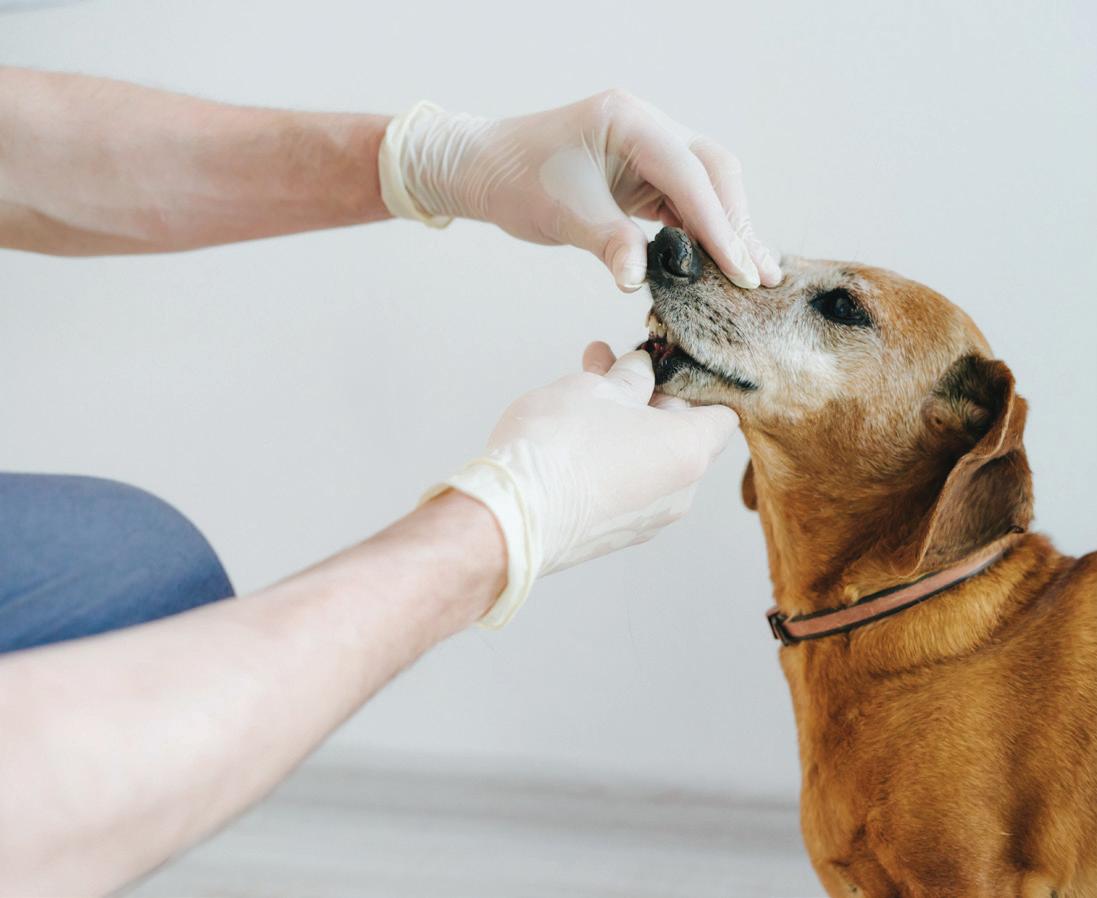
RVT News California Veterinarian • January–February 2022 cvma.net 38
paper rolls like a tootsie roll, or just make them follow the treat before giving it to them.
Some animals love to go for rides. The fresh air, anticipation of going to their favorite place, or just hanging out with you is great for their cognitive stimulation. Be careful that they don’t have to use too much core strength while stabilizing themselves. Long rides can be like us “surfing” that whole time while in the car, so be mindful of them.
When caring for the geriatric patient, here are two important thoughts:
1. “Medicine should be practiced as a form of friendship”—Leon Bernard
2. Every animal deserves to live the best quality of life for the longest possible time period!
Student Scholarship Award Applications Available
February 1, 2022
The California Veterinary Medical Foundation (CVMF) offers two scholarships every year to veterinary students.
CVMF/VISC Student Scholarship Award
The first scholarship, bestowed by the CVMF in partnership with Veterinary Insurance Services Company (VISC), is the CVMF/VISC Student Scholarship Award. This scholarship is made possible with donations from VISC and the CVMF and is part of VISC’s ongoing commitment to support the veterinary profession in California. The CVMF will award $1,000 scholarships to third- and fourth-year veterinary students in good standing at the University of California, Davis, School of Veterinary Medicine or the Western University College of Veterinary Medicine, or California residents attending out-of-state AVMA-accredited veterinary medical colleges.
Sandy Gregory is certified as a Veterinary Technician Specialist in physical rehabilitation as well as in canine rehabilitation. She is the advisor for the Student Chapter of the National Association of Veterinary Technicians in America, where she has been awarded Advisor of the Year. Sandy has also received the California Veterinary Technician of the Year award and the Linda Markland Outstanding Veterinary Technician award. She is the liaison for the American Association of Rehabilitation Veterinarians, committee member for the Student Chapter of the NAVTA, and the vice president for the Academy of Physical Rehabilitation Veterinary Technicians.
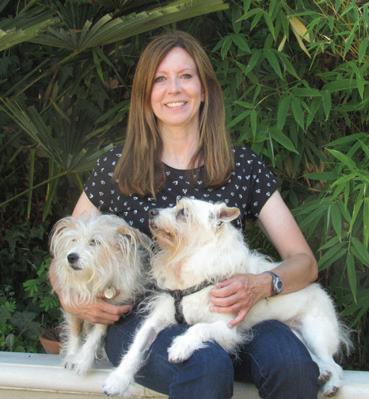
References
• Gardner M, McVety D. Treatment and Care of the Geriatric Veterinary Patient: Wiley 2017
• Marcellin-Little DJ, Millis DL, Levine D, Physical Rehabilitation for Geriatric and Arthritic Patients
In Millis DL, Levine D, eds. Canine Rehabilitation and Physical Therapy: Elsevier, Second Edition 2012
• AHAA 2019 Life Stage Guidelines
Ron Faoro, DVM, Student Scholarship Award
The second student scholarship is the Ron Faoro, DVM Student Scholarship Award. Established in the memory of past CVMA president Dr. Ron Faoro and administered by the CVMF, this award presents recipients with $2,500 scholarships for their role in leadership. Second-, third-, and fourth-year veterinary students in good standing at the UC Davis School of Veterinary Medicine and Western University College of Veterinary Medicine are eligible to apply.
How to Apply
Recipients will be selected by the CVMF/VISC Student Scholarship Fund Subcommittee and the Ron Faoro, DVM Student Scholarship Fund Subcommittee based on their submitted application materials.
Applications for both scholarships must be received by April 15, 2022 to be considered. For eligibility requirements and application information, please visit the CVMF website at cvmf.net, call Della Yee at 800.655.2862, or email staff@cvmf.net. Recipients will be notified of their award by June 30, 2022.
39 View this issue of the California Veterinarian online at cvma.net/publications. Student News
Sandy Gregory, M Ed, RVT, VTS (Physical Rehabilitation), CCRA
UC Davis Offers Popular Veterinary Business Learning
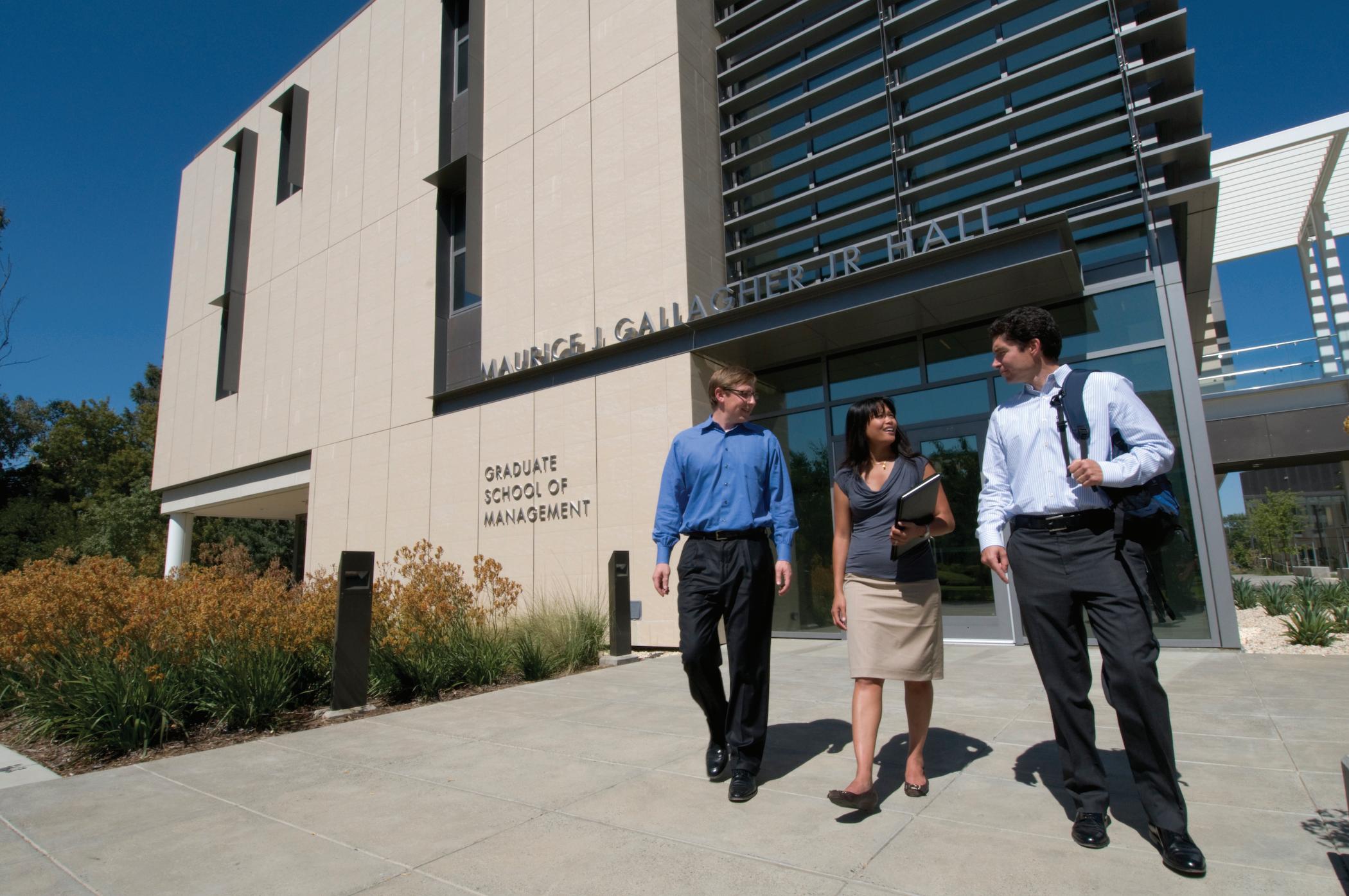
The UC Davis School of Veterinary Medicine and UC Davis Graduate School of Management (GSM) will once again offer the Foundations of Veterinary Business certificate program from May to August of 2022. This popular online program, which has consistently sold out, combines self-paced online modules on general business principles with three live, interactive Saturday Zoom sessions covering practical, veterinaryspecific business concepts. The program is designed for practice owners, prospective owners, practice leaders, and hospital administrators who want to take their understanding of business to the next level.
The program provides veterinary working professionals with a time- and cost-efficient way to further their understanding of business basics, including managerial accounting, finance, marketing, strategy, and more. Attendees work
in small teams on an online Capstone Project analyzing actual veterinary practice data, presenting their findings in the final Zoom session. The online modules are taught by GSM business experts and the live Zoom sessions on June 18, July 16, and August 13 are taught by veterinary industry experts. One hundred percent of past participants to date would recommend this program to their colleagues, according to a post-attendance survey of all participants.
Upon successful completion of the program, graduates receive a certificate from the UC Davis GSM as well as veterinary CE credit. Registration is $2,500 and limited to 50 participants, with 15 slots reserved for UC Davis veterinary students, who receive financial support from Platinum sponsor Zoetis. Registration and more information can be found at: na.eventscloud.com/vetmed2022.
UC Davis News California Veterinarian • January–February 2022 cvma.net 40
The UC Davis School of Veterinary Medicine and Graduate School of Management will offer a veterinary business course in 2022.
WesternU Student’s Long Journey to Success
Ana Ramirez, WesternU DVM 2023, has wanted to be a veterinarian since she was a young girl. She graduated from Cal Poly in 2007 and was the first member of her family to go to college, but marriage, children—life—intervened.
Landing a job as a veterinary technician at Blue Pearl Southern California Veterinary Specialty Hospital in Irvine was her first step into the veterinary profession. As she gained knowledge, she took on responsibilities and was eventually tapped to lead Blue Pearl’s Oncology Department.
Ana’s work with animals rekindled her dream of becoming a veterinarian, and she was ultimately accepted into WesternU’s veterinary program. This spring she was named a recipient of the Merck Animal Health Veterinary Scholarship, one of just 54 veterinary students from around the world to receive the $5,000 award.
It was her work in oncology that re-ignited her desire to return to school for her doctorate. “That’s what really sparked my interest in veterinary medicine—the whys,” Ana said. “I witnessed firsthand the emperor of all maladies: cancer. This drove my curiosity. Why is this happening? Why with some patients, chemotherapy works? Why is it with others it doesn’t?”
The path to the DVM has been complicated. Because she re-entered higher education a decade after completing her Bachelors, Ana needed to re-take some classes. She began taking additional courses at Cal Poly Pomona (CPP) and, after being denied entry to veterinary college a second time, she entered into a Master’s program in Biology at CPP before starting at WesternU.
Veterinary college became a family effort. Because she is a mother of two children—Ricky, 7 and Xavier, 2—her husband Ricardo had to take on more of the childcare responsibilities. And her mother pitched in, as well. While completing her schooling, Ana continued to work

at Blue Pearl and life became busier than ever. “After having Ricky, I was offered the position of Veterinary Supervisor overseeing the whole hospital, but during the weekends it was primarily emergency and internal medicine,” Ana said.
Then the pandemic arrived, causing her to jockey for online instructional time with her eldest son, while making sure her youngest didn’t get into trouble. “It has been interesting during COVID times, to say the least,” Ana said. “The beginning part was disastrous. It was a lot of yelling and crying and meltdowns,” she recalled. “There was a silver lining, however. Although I studied late into the night, I was able to be present for Xavier’s milestones, saw Ricky tackle first grade, and spent more family time I thought I would have missed pre-pandemic.”
Everyone in the family made it through the past 18 months—stronger for the effort and ready for what comes next.
41 View this issue of the California Veterinarian online at cvma.net/publications. WesternU News
Limited Time Offer! 20% Off the CVMA Guide to Cal/Osha Compliance
Cal/OSHA requires a current written plan and active ongoing health and safety program in every workplace.
The CVMA Guide to Cal/ OSHA Compliance has everything you need to assure your practice is compliance ready!
The guide with an interactive step-by-step process creates a written plan customized for your veterinary practice and guidance on implementing your Cal/ OSHA program.
• A customized written safety and health plan with policy statements
• Training information for designated safety coordinator(s)
• Workplace inspection checklists and report forms
• Required posting information
• Employee training resources
• Record keeping assistance
• New! COVID-19 Protection Program
To order the CVMA Guide to Cal/OSHA Compliance, visit cvma-inline.net, or contact the CVMA at 800.655.2862.
LIMITED TIMEOFFER
CLARO®
(flor fenicol, terbinafine, mometasone furoate)
O tic Solution for use in dogs only
Do Not Use in Cats.
Antibacterial, antifungal, and anti-inflammatory
For Otic Use in Dogs Only
CAUTION: Federal (U.S.A.) law restricts this drug to use by or on the order of a licensed veterinarian.
DESCRIPTION: CLARO® contains 16.6 mg/mL florfenicol, 14.8 mg/mL terbinafine (equivalent to 16.6 mg/mL terbinafine hydrochloride) and 2.2 mg/mL mometasone furoate. Inactive ingredients include purified water, propylene carbonate, propylene glycol, ethyl alcohol, and polyethylene glycol.
INDICATIONS:
CLARO® is indicated for the treatment of otitis externa in dogs associated with susceptible strains of yeast (Malassezia pachydermatis) and bacteria (Staphylococcus pseudintermedius).
DOSAGE AND ADMINISTRATION:
CLARO® should be administered by veterinary personnel.
Wear eye protection when administering CLARO®.
(see Human Warnings, PRECAUTIONS, POST APPROVAL EXPERIENCE).
Splatter may occur if the dog shakes its head following administration. Persons near the dog during administration should also take steps to avoid ocular exposure.
Shake before use.
Verify the tympanic membrane is intact prior to administration. (see CONTRAINDICATIONS, PRECAUTIONS, POST APPROVAL EXPERIENCE).
Administer one dose (1 dropperette) per affected ear.
1. Clean and dry the external ear canal before administering the product.
2. Verify the tympanic membrane is intact prior to administration.
3. Remove single dose dropperette from the package.
4. While holding the dropperette in an upright position, remove the cap from the dropperette.
5. Turn the cap over and push the other end of the cap onto the tip of the dropperette.
6. Twist the cap to break the seal and then remove cap from the dropperette.
7. Screw the applicator nozzle onto the dropperette.
8. Insert the tapered tip of the dropperette into the affected external ear canal and squeeze to instill the entire contents (1 mL) into the affected ear.
9. Gently massage the base of the ear to allow distribution of the solution. Restrain the dog to minimize post application head shaking to reduce potential for splatter of product and accidental eye exposure in people and dogs (see POST APPROVAL EXPERIENCE)
10. Repeat with other ear as prescribed.
11. The duration of the effect should last 30 days. Cleaning the ear after dosing may affect product effectiveness.
CONTRAINDICATIONS: Do not use in dogs with known tympanic membrane perforation (see PRECAUTIONS). CLARO® is contraindicated in dogs with known or suspected hypersensitivity to florfenicol, terbinafine hydrochloride, or mometasone furoate.
WARNINGS:
Human Warnings: CLARO® may cause eye injury and irritation (see PRECAUTIONS, POST APPROVAL EXPERIENCE). If contact with eyes occurs, flush copiously with water for at least 15 minutes. If irritation persists, contact a physician. Humans with known hypersensitivity to any of the active ingredients in CLARO® should not handle this product.
PRECAUTIONS: For use in dogs only. Do not use in cats (see POST APPROVAL EXPERIENCE)
Wear eye protection when administering CLARO® and restrain the dog to minimize post application head shaking. Reducing the potential for splatter of product will help prevent accidental eye exposure in people and dogs and help to prevent ocular injury (see DOSAGE AND ADMINISTRATION, Human Warnings, POST APPROVAL EXPERIENCE)
Proper patient selection is important when considering the benefits and risks of using CLARO®. The integrity of the tympanic membrane should be confirmed before administering the product. CLARO® has been associated with rupture of the tympanic membrane. Reevaluate the dog if hearing loss or signs of vestibular dysfunction are observed during treatment. Signs of internal ear disease such as head tilt, vestibular signs, ataxia, nystagmus, facial paralysis, and keratoconjunctivitis sicca have been reported (see POST APPROVAL EXPERIENCE) with the use of CLARO®. Do not administer orally.
Use of topical otic corticosteroids has been associated with adrenocortical suppression and iatrogenic hyperadrenocorticism in dogs (see ANIMAL SAFETY).
Use with caution in dogs with impaired hepatic function (see ANIMAL SAFETY).
The safe use of CLARO® in dogs used for breeding purposes, during pregnancy, or in lactating bitches, has not been evaluated.
ADVERSE REACTIONS:
In a field study conducted in the United States (see EFFECTIVENESS), there were no directly attributable adverse reactions in 146 dogs administered CLARO®. POST APPROVAL EXPERIENCE (2019): The following adverse events are based on post-approval adverse drug experience reporting for CLARO®. Not all adverse events are reported to FDA/CVM. It is not always possible to reliably estimate the adverse event frequency or establish a causal relationship to product exposure using these data.
The CVMA is offering a promotional rate of $223 for new subscriptions until February 15, 2022.
In Line
Veterinary Safety & Compliance
This program is made possible by a grant from
In humans accidental exposure leading to corneal ulcers and other ocular injuries such as eye irritation and redness have been reported. Exposure occurred when the dog shook its head after application of CLARO®. Skin irritation has also been reported. In dogs, the adverse events reported are presented below in decreasing order of reporting frequency: Ear discharge, head shaking, ataxia, internal ear disorder (head tilt and vestibular), deafness, emesis, nystagmus, pinnal irritation and ear pain, keratoconjunctivitis sicca, vocalization, corneal ulcer, cranial nerve disorder (facial paralysis), tympanic membrane rupture.
CLARO® is not approved for use in cats The adverse events reported following extra-label use in cats are presented below in decreasing order of reporting frequency: Ataxia, anorexia, internal ear disorder (head tilt and vestibular), Horner’s syndrome (third eyelid prolapse and miosis), nystagmus, lethargy, anisocoria, head shake, emesis, tympanic rupture, and deafness.
To report suspected adverse drug events and/or obtain a copy of the Safety Data Sheet (SDS) or for technical assistance, contact Elanco at 1-800-422- 9874.
For additional information about adverse drug experience reporting for animal drugs, contact FDA at 1-888-FDA-VETS or online at http://www.fda.gov/reportanimalae.
Information for Dog Owners:
Owners should be aware that adverse reactions may occur following administration of CLARO® and should be instructed to observe the dog for signs such as ear pain and irritation, vomiting, head shaking, head tilt, incoordination, eye pain and ocular discharge (see POST APPROVAL EXPERIENCE). Owners should be advised to contact their veterinarian if any of the above signs are observed. Owners should also be informed that splatter may occur if the dog shakes its head following administration of CLARO® which may lead to ocular exposure. Eye injuries, including corneal ulcers, have been reported in humans and dogs associated with head shaking and splatter following administration. Owners should be careful to avoid ocular exposure (see PRECAUTIONS, POST APPROVAL EXPERIENCE)
Manufactured for Elanco US Inc Shawnee, KS 66216
Made in Germany
CLARO, Elanco and the diagonal bar logo are trademarks of Elanco or its affiliates.
©2021 Elanco or its affiliates.
Approved by FDA under NADA # 141-440
87227014 TRD BSV 05/21
California Veterinarian • January–February 2022 cvma.net 42
CVMA Guide to Cal/OSHA Compliance Sample Workplace Health & Safety Plan
How to Place a Classi ed Ad
Place your ad in the Career Center at cvma.net. There are two options for classified advertising:
1. Online advertising
2. Online and in one issue of the California Veterinarian
CVMA Members NonMembers
*Price includes the first six lines of text. Each additional line is $10/$11 for non-members. A line consists of approximately 50 characters.
**If you wish to place a print ad only, contact Laura Phillips at 916.649.0599 or classifieds@cvma.net.
Online only
30 days online
$149 $199
60 days online $249 $299
90 days online $349 $399
Online and in one issue of the California Veterinarian
60 days online + one issue of the California Veterinarian $299 $349
90 days online + one issue of the California Veterinarian $399 $449
POST AN ANONYMOUS AD OR RESUME
Resume – Post a confidential resume. Go to cvma.net. Click on the Resources tab then Classifieds in the right menu to get started.
Ad – Place a confidential ad by creating an anonymous email address and using it when posting your ad.
POSITIONS OFFERED
NORTHERN CALIFORNIA
Veterinarians
Carmel-By-The-Sea, California: Our small animal hospital seeks an associate veterinarian. This area is heaven on earth for pets and people alike. Endless beaches, recreation trails, hiking, Big Sur coastline, and more. We are family-owned, and non-corporate, offering high quality and high-tech medical care in a great work environment, with a friendly happy team. We own newer digital x-ray, ultrasound, surgery suite, in house labs, and more. We are in an extremely high pet spending index area, meaning you can focus on your best medicine and the clients will thank you for it. Production potential to $200k plus. This hospital has been in practice for nearly 50 years at this location. You must be friendly and a great doctor. Special interest in general surgery, ultrasound, dentistry or acupuncture/alternative medicine a plus (but not required). At least 1 year of experience post-DVM preferred (internship and/or residency counts). Email sannadvm@hotmail.com.
The Ark Pet Hospital is looking for another full-time veterinarian to join our established small animal and exotic practice in the East Bay. The Ark Pet Hospital has served our community since 1999. We are
If you have any questions, please contact customer service at 860.437.5700, clientserv@yourmembership.com, or classifieds@cvma.net.
DEADLINE DATES FOR AD SUBMISSIONS IN THE CALIFORNIA VETERINARIAN:
Issue
Deadline
Jan/Feb December 5
March/April February 5
May/June April 5
July/Aug June 5
Sept/Oct August 5
Nov/Dec October 5
If your ad is received after the deadline, it will go into the following month’s California Veterinarian. After the deadline, the CVMA cannot alter or cancel ads. The CVMA reserves the right to edit copy and does not assume liability for contents of classified advertising. Prices subject to change without notice.
a full-service veterinary hospital with new state of the art equipment located an hour east of San Francisco. We provide comprehensive medical care including surgery, dentistry, and preventative care for small animals and exotics. Our team is devoted to high-quality medicine with emphasis on client education and providing a welcoming experience for our patients and their owners. We provide a flexible schedule with no on-call or after hour emergencies. We welcome experienced colleagues and new graduates to apply! Our compensation package includes: Competitive base salary plus production; Sign-on bonus; 401k plans; PTO plus paid holidays; Medical, Dental and Vision plans; Annual CE allowance; Membership and licensing fees reimbursed. Email lorivet@mac.com.
Associate veterinarian wanted for small animal/exotics practice. We are a recently remodeled, state-of-the art equipped two doctor practice looking for an associate to join our team. The practice is an interesting mix of rural/suburban/urban patients, including exotics. We have very close collaboration with specialists in surgery, cardiology and radiology. Practice owner is ABVP certified; we are working towards our AAHA certification. The practice is located in a rapidly growing area in Northern California near Sacramento, an hour from San Francisco and close to recreational areas with reasonable cost of living and proximity to quality CE. Our staff is friendly, supportive and kind. We have an excellent reputation in
Classified Advertising 43 View this issue of the California Veterinarian online at cvma.net/publications.
During the Great Depression, a time of confusion and great concern, President FDR took to the radio with informal chats that dispelled myths and provided calm to the American Public. Now nearly 90 years later, Americans experience similar troubling times. Inflation, Pandemics and labor shortages have left Veterinarians asking what’s next?



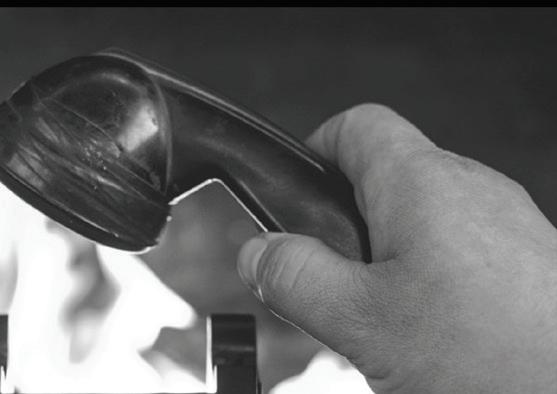
What does the Veterinary Sales Market look like in 2022?
Give us a call! Lets have a chat about the marketplace. Learn about practice values, who’s buying and selling, corporate consolidators and lending availability. This discussion is complimentary and confidential. Simmons & Associates would like to help start 2022 in a positive direction.

Schedule your Veterinary Fireside Chat with Simmons & Associates today! www.simmonsinc.com
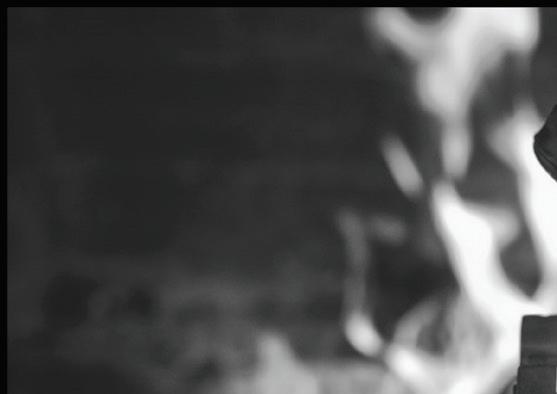
Byron Farquer, DVM, CVA pacific@simmonsinc.com Dardalee Bussell, DVM (209) 845 2088
the community. Schedule is flexible. Special interests are welcome. Email: animalcareclinicoffice@gmail.com.
OUT OF STATE CALIFORNIA Veterinarians
Work, live, and play in the Sierra foothills of California, El Dorado County. Black Oak Animal Hospital in Georgetown, CA, would like to hire an associate veterinarian, full or part time. We are a sole proprietor small animal clinic providing general veterinary services to our Divide community, located between the forks of the American River. Contact Dr. Irene Sakaishi, (530) 333-1544 work, (530) 333-0428 home, or irenesakaishi@sbcglobal.net.
Purrfurably Cats in Monterey, CA is seeking a full-time veterinarian to join our feline-only practice! Your Well Being Matters: Worklife balance with generous paid time off; Relocation Assistance; Sign-On Bonus!; Paid professional dues and liability coverage; Competitive salary; Continuing Education reimbursement; 401k; Medical, dental, vision and prescription drug benefits for you and eligible dependents; Ongoing mentoring; Full support of talented and passionate staff to help you every step of the way; Plus much more! Qualifications: New grads welcome; Experienced vets welcome. Live your Best-Balanced Life! Located in Monterey, CA, you won’t run out of fun activities in this picturesque coastal community. From winding along the breathtaking Big Sur coastline on Highway 1 to sipping wine to playing 18 holes on the numerous golf courses, Monterey will reinvigorate your soul and provide that work/life balance that you are looking for. Who We Are: Established in 1995, we are Monterey County’s only feline-exclusive veterinary hospital. Our state-of-the-art fullservice veterinary facility retains a homey feel for the comfort and care of that special feline companion. The hospital is equipped with digital radiology, dental radiology, in-house lab equipment and a full boarding suite. Our fun-loving and professional team maintains an enjoyable, cat-friendly work atmosphere committed to the needs of our patients, clients, and staff. Don’t Wait! If you are interested in becoming part of a practice team with an excellent community reputation, a positive work environment and focus on providing authentic service while living your best-balanced life, APPLY NOW! Email twoodward@ westernvetpartners.com.
CENTRAL CALIFORNIA Veterinarians
Unique opportunity for veterinarian to run clinic in a quiet community on the central coast. 10 minutes to Santa Maria. 5 minutes to pristine uncrowded beach. Live on premises (optional). RVT’s and administrators also wanted. Please send resume to: CLASP, P.O. Box 245, Guadalupe, CA 93434; counciloflosangelessmallpress@gmail. com, 805.343.0011 (no text, leave message).
SOUTHERN CALIFORNIA Veterinarians
Associate Veterinarian for a feline only practice in beautiful Santa Clarita, CA. California DVM License in good standing. Good communication skills and a team player. Must love cats! Email jenr@catdoctor.com.
As an emergency veterinarian, Veterinary Specialty Center in Buffalo Grove, IL knows your wish list:
• Working for an established, privately-owned specialty and emergency hospital with an incredible reputation for excellence
• Medical transcriptionists to write your medical records for you in real-time so you can focus on the medicine and having a work-life balance
• The highest ratio of doctors to certified/specialty technicians so that you can focus on what you love, practicing the best medicine possible
• Student Loan Repayment Program (we make sizable, nontaxable contributions towards your student loans)
• Working with an amazing referral community
• Environmentally and ethically driven business (Certified B Corp)
• Support from our four phenomenal board-certified criticalists
• Collaborating with a diverse and thorough team of specialists that are all in the same building
• 24/7/365 on-call emergency surgical support from our five board-certified surgeons, two anesthesiologists and their team
• Level I Veterinary Trauma Center
• Competitive salary that is not production-based so you can provide tailored care that meets both patient and client needs
• Utilizing the latest software technology including electronic records and treatment sheets
• Minimum of two emergency doctors on the floor so you are never alone
• Strong rotating intern program to help fortify our future veterinary community
• Daily grand rounds with our specialists to discuss hospitalized patients and promote learning
• Advanced imaging, including ultrasounds, performed by our two board-certified radiologists
• 3 Tesla MRI, 64-slice CT, digital radiology, fluoroscopy and c-arm, hyperbaric and high flow oxygen therapy, ventilator support, portable ultrasound, plasmapheresis, hemodialysis, and apheresis
• 24/7/365 on-call emergency endoscopy support from our three board-certified internists and their team
• On-site veterinary diagnostic laboratory and clinical pathologist for fast results
• Licensed Clinical Professional Counselor to support both staff and clients
• Fully equipped on-site bistro with fresh salads, sandwiches, snacks, drinks, and incidentals
• 401k match
• Generous CE allowance
• Medical, Dental, and Vision
• Pet insurance
• Employer HSA contributions
• Employee Assistance Program
A little bit about us: VSC is a privately-owned specialty and emergency hospital that has over 300 employees at our main location, which is about 40 minutes just outside of Chicago in Buffalo Grove. We are extremely collaborative and foster a very active learning environment for our staff, residents, interns and
Continued on page 46
Classified Advertising 45 View this issue of the California Veterinarian online at cvma.net/publications.
externs. We are also the first veterinary hospital in the U.S. to become a Certified B Corporation, which means we have taken great strides to put our employees, community and environment first and use them to guide our trajectory. Our specialties include surgery, rehabilitation and integrative medicine, internal medicine, emergency and critical care, anesthesia and pain management, neurology, radiology, oncology (medical and radiation), cardiology, dermatology, nephrology and clinical patholog y.
Top reasons why you should consider a career in the Midwest: Chicago is a big city with a lot of really fun things to do (museums, parks, restaurants, zoos, aquarium, shopping, concerts, volunteering, tours, etc.)
Lots of breathing room if that’s your vibe (parks, beaches, forests, camping, suburbs, and plenty of space for dogs, chickens, goats, etc.)
We’re community-oriented and healthier for it (a University of Cambridge 2013 study assessed the personality traits of more than 1.5 million people and found that the personalities of Midwesterners had “moderately high levels of extraversion, agreeableness, and conscientiousness.” So…come on over, let’s be friends!)
The Midwest is less stressed (in 2020, WalletHub released data on the most and least stressed states with the Midwest leading as the least stressed. Laidback lifestyles, affordability, sense of community—these could all be factors in the relatively low level of stress for Midwesterners.)
We have not one, but two international airports (whether you need to quickly and easily visit friends, family or an exotic locale for a little rest and relaxation, we’ve got you covered.)
Since we just checked all your wish list boxes, what are you waiting for? Apply today and join our incredible team!
Job Requirements: Internship-trained preferred or at least 3 years of emergency experience. Not enough emergency experience? No problem. We also offer our accelERate program
at https://www.vetspecialty.com/accelerate/ where you are closely mentored for 6 months and then have a guaranteed six-figure salary.
Apply for this Job: Contact Person: Jayme Richardson; Phone (847) 459-7535 Ext. #1522; Email Address: jrichardson@ vetspecialty.com; Fax: (847) 808-8900; Apply URL: https:// recruiting.paylocity.com/recruiting/jobs/Details/384012/ Veterinary-Specialty-Center/Emergency-Veterinarian.
HOSPITALS – SALES/LEASE/BUY
Expandable SA 60+ years practice near Long Beach CA on 2500SF corner-lot freestanding lot building. Retiring owner casually working about 25 hours weekly for health reason. Buyers ONLY please call on Mondays 562.304.8836 after 10:30am with ID unblocked.
FLORIDA: Free standing Hospital located in one of the fastest growing coastal counties in FL. One Vet half time doing 600K/ year with building already built to expand into double size 2-3 Vet practice. Principals only reply to jess1950@comcast.net.
For Sale San Diego Small Animal Practice and R.E. Investment. Email: Starr2000@sbcglobal.net.
Well established, prosperous vet practice for sale. Located in beautiful area of Sonoma County. Office is on 1.3 acre property, and option is available to purchase either the practice only, or the practice and property. Financially responsible buyers only. bmpalermo2@yahoo.com.
Concord small animal practice and R.E. with rental unit for sale. Owner retiring working about 25 hours weekly. 30+ years practice grossing 600K. Email ashkg@att.net.
Classified Advertising California Veterinarian • January–February 2022 cvma.net 46 Elanco 20 Epicur Pharma 8 Gatto McFerson .............................................................................................................................................................................................................. 37 Pacific Professionals .................................................................................................................................................................................................... 47 Preferred Employers 2 Simmons 44 VISC ........................................................................................................................................................................................................................................ 48 Advertising Index
Brokers and Appraisers
Practice and Real Estate Sales Transition Specialists Practice Appraisals
Ellie Wattles, DVM, President, Broker
Beka Herrera, Vice President, Broker
Connie Burke, CPA, CVA, CM&AA
MARIN COUNTY: Friendly community located just north of San Francisco. This exceptional practice is located adjacent to a major thoroughfare, across from a large mall. Highly functional facility has recently been renovated. The practice includes ~2,300 sq. ft. with 3 exam rooms. Equipment includes digital X-Ray, digital dental X-Ray and Antech lab equipment. Well-managed, paperless practice is currently operated with 1 DVM per day. The practice is experiencing increased revenue year over year. 2021 Projected Gross ~$900,000 with no weekend hours. Significant growth potential with increased hours. Possibility to convert into a multi-doctor practice. N NEW LISTING! PRACTICE PRICE: $763, 000
SONOMA COUNTY: Approximately 1 hour north of San Francisco. Surrounding area offers a wide variety of amenities including wineries, biking, hiking & horse trails. Located in a quaint family-oriented community with outstanding climate and first-rate quality of life. Spacious facility is a true fixer-upper with many opportunities for redesign. ~2,300 sq. ft. reasonably priced facility is situated on a 6,000 sq. ft. lot. This booming practice, which offers modest fees, is currently operated as a busy single-DVM practice with equipment including DR X-Ray. 2021 Projected Gross ~$1,050,000. N NEW LISTING! PRACTICE AND REAL ESTATE PRICES PENDING. Please call for additional information.
ORANGE COUNTY: Great multicultural community. The area features local highly rated schools and colleges/universities. Well- established PX located along a major thoroughfare and surrounded by housing communities. Roomy leasehold, free-standing facility consists of 2 exam rooms, 20 cages and 4 runs. Equipment includes DR X-Ray, dentalaire machine and Antech lab equipment. 2021 Projected Gross ~$727,000 produced with minimal DVM hours. Growth potential to expand business hours with new ambitious owner-operator. Rare opportunity to also purchase the facility (real estate) from the landlord. N NEW LISTING! PRACTICE PRICE: $550,000 REAL ESTATE FOR SALE
GREATER SACRAMENTO: Located approximately 25 miles northeast of Sacramento. Free-standing, leased facility consists of ~2,300 sq. ft with 2 exam rooms, 18 cages & 10 runs. Computerized practice includes digital X-Ray and ultrasound. 2021projected gross ~$1.3 Million. General full-service small animal hospital with special reproduction services. C CALL FOR PRICING & ADDITIONAL DETAILS
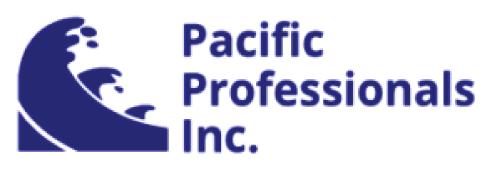
KERN COUNTY: Situated in a growing community located ~1 hour North of LA with a strong agricultural, oil & general broad economic base including a new Amazon fulfillment center. There are many nearby amenities & affordable housing. This general Small Animal practice offers an ~3,000 sq. ft. facility with 3 exam rooms, 60+ cages and 10 runs. Equipment includes ultrasound & digital X-RAY. 2021 projected gross ~$1,245,000. Potential to significantly increase hours of operation to grow productivity. P PRACTICE PRICE: $667, 000 REAL ESTATE PRICE: $425,000
VENTURA COUNTY: Located in a great upscale community with excellent amenities, desirable demographics & highly rated schools. Family-friendly community. Attractive & modern, ~1,800 sq. ft leased facility is strategically located in popular shopping center. Equipment includes Abaxis Lab & Digital X-Ray. Underutilized PX /limited DVM hours. 2020 Gross: $467,000. PX is offered at less than a start-up PRACTICE PRICE ONLY: $225,000
GREATER CARMEL: A unique community that embraces family, prosperity, and the highest quality of life. The Pet Spending Potential Index for the surrounding area is 96% higher than the national average. Well established, growing PX is in an attractive ~1,600 sq. ft. leased facility, including 2 exam rooms, 12 cages & 2 runs with room for expansion. Full service, small animal practice includes extensive equipment. 2021 projected gross ~$1.2 Million produced primarily with ~1 DVM per day and limited hours, including no weekend PRACTICE PRICE: $824,500
GREATER LOS ANGELES: Situated near all the amenities that Los Angeles has to offer. Free- standing facility includes 2 exam rooms, 22 runs & 30 cages with options for redesign. Equipment includes 2 anesthetic machines, IDEXX lab equipment & DR X-Ray. 2020 Gross ~$2 Million produced w/ essentially 2 full time DVMs. Extremely profitable PX currently under-utilized with potential for increased services, hours, and revenues. Owner & associate open to remaining post-sale, under new ownership, if desired by new buyer. P PRACTICE PRICE: $1, 688,000 REAL ESTATE FOR SALE
SAN DIEGO, S O UTH B A Y: Well-established practice is located within a strip center with the leased facility consisting of ~1,968 sq. ft / 3 exam rooms. Exceptionally well-equipped PX including Digital X-Rays (one for body and one for dental), Color doppler ultrasound, Abaxis analyzer (all owned by the practice). 2021 projected gross over ~$2 Million. Excellent growth and profitability. P PRACTICE PRICE: $1,700,000.
Wishing you a Happy New Year! Contact us to learn how we can help achieve your goals of selling or buying! 545 Sespe Avenue Fillmore, CA 93015 Phone: 805.524.3195 Fax: 805.524.3192 E-mail: PacProInc@aol.com Website: www.pacificproinc.com






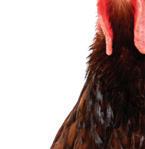
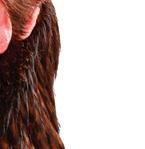


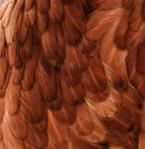
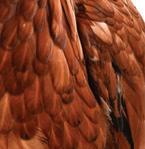
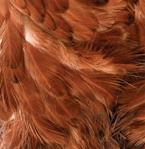











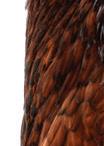














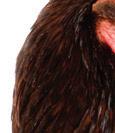
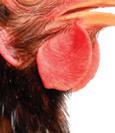


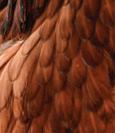
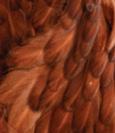
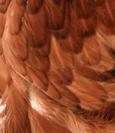
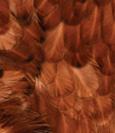


























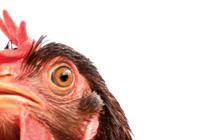


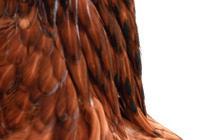

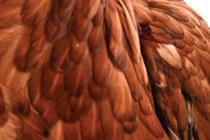
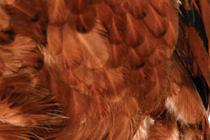








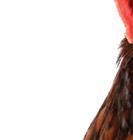





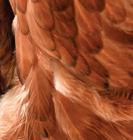










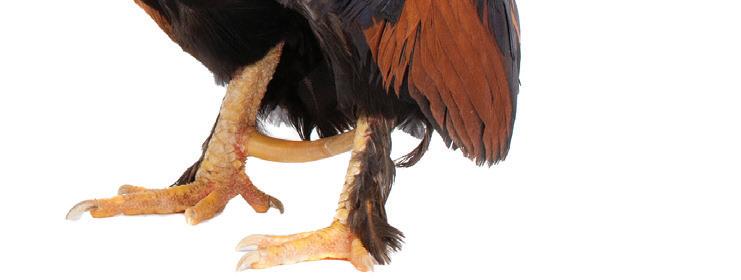



































VISC is a wholly owned subsidiary of the California Veterinary Medical Association | CA Lic. # 0F64180 Call VISC at 888.762.3143 or email info@visc-ins.com for solutions to all your insurance needs. Business Package | Veterinary Malpractice | VMB Defense | Employment Practices Liability (EPLI) | Workers’ Compensation Commercial Auto/Umbrella | Homeowners | Renters | Auto | Boat | Personal Umbrella | Long-Term Care | Disability | Life Discover the value of VISC – Specializing in insuring veterinary professionals. Does your insurance stand out from the rest?
































































 Dan Baxter, Executive Director
Dan Baxter, Executive Director






























































 by Suzie Kovacs, Ph.D. By
by Suzie Kovacs, Ph.D. By






















































 by Wayne Rosenkrantz, DVM, DACVD | 2022 Paci c Veterinary Conference Speaker By
by Wayne Rosenkrantz, DVM, DACVD | 2022 Paci c Veterinary Conference Speaker By
































































































































































